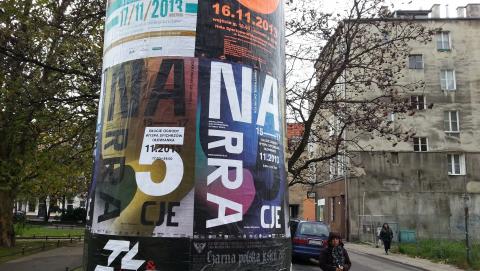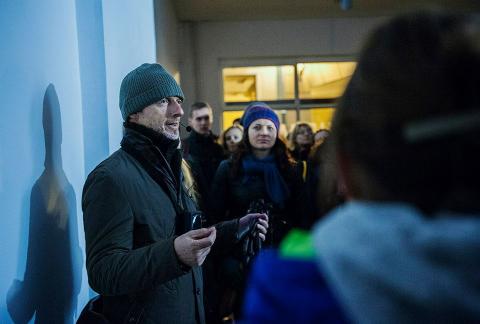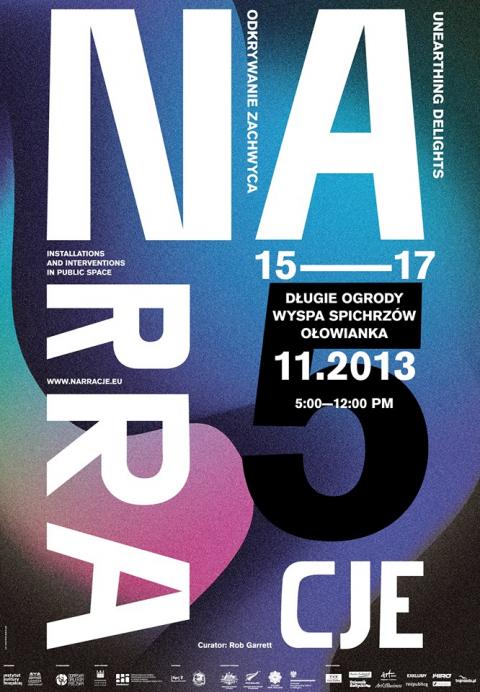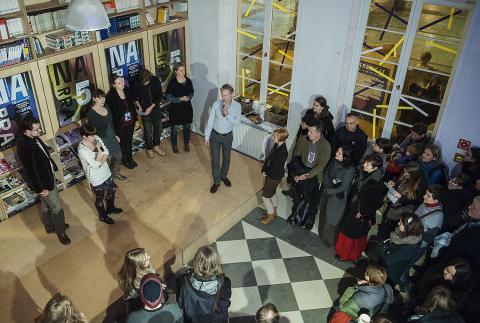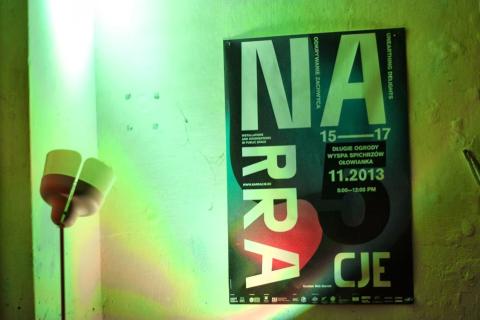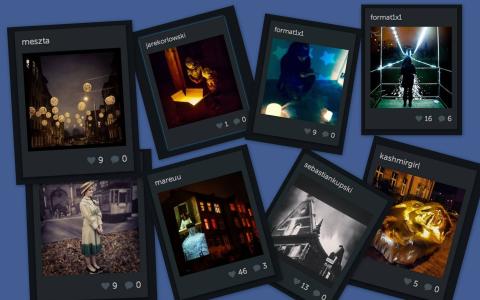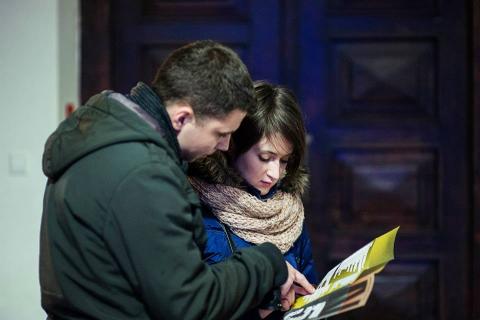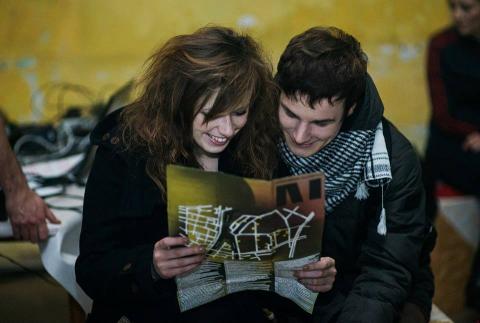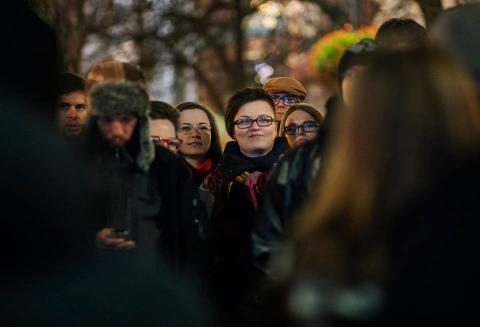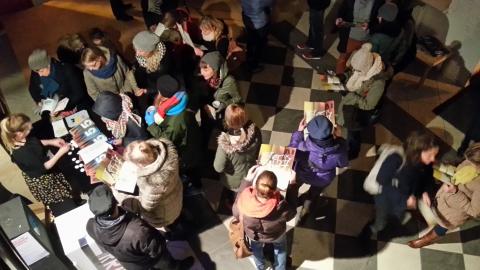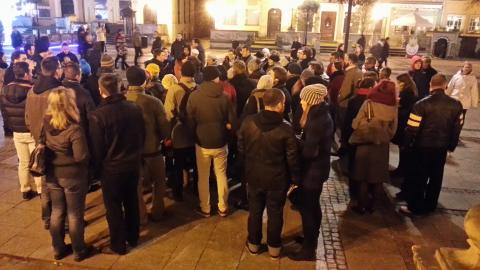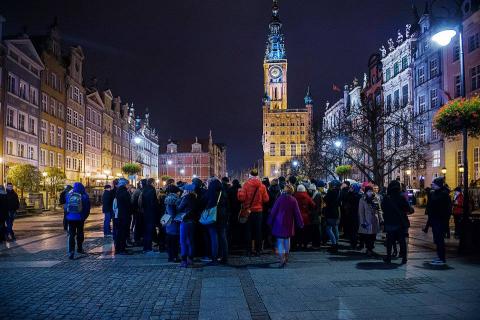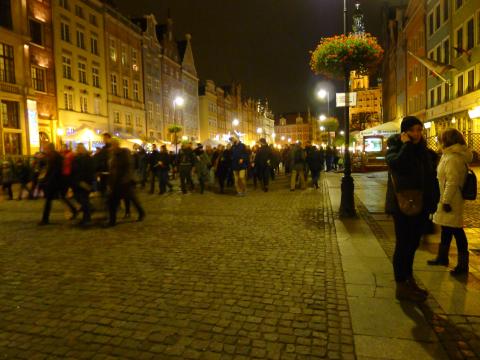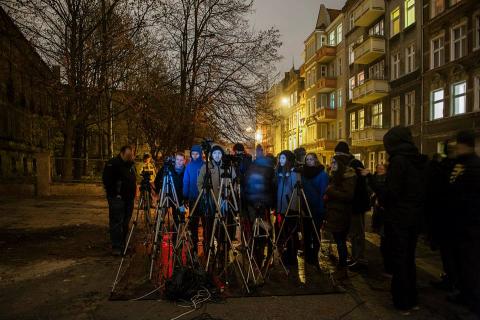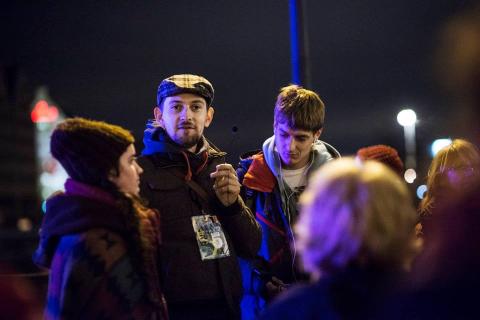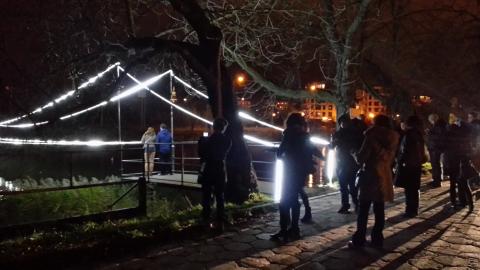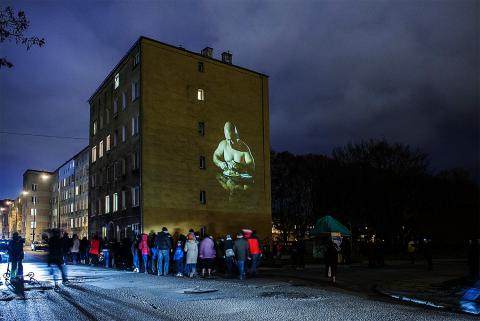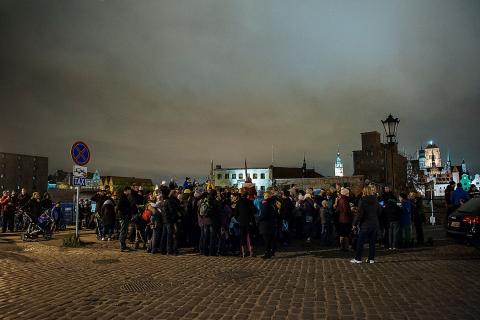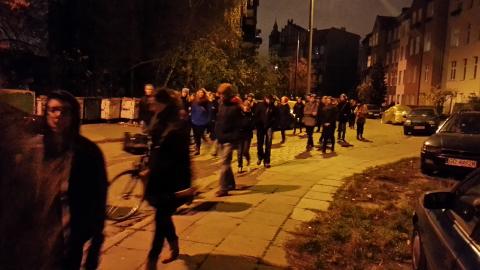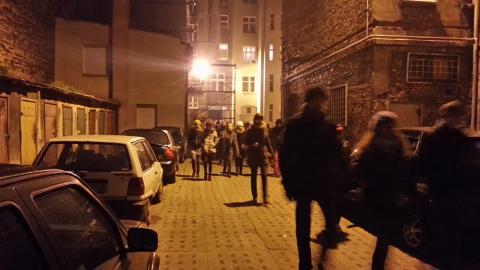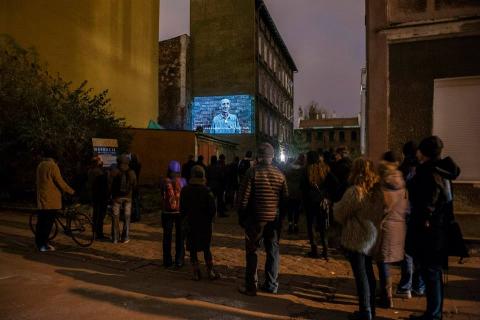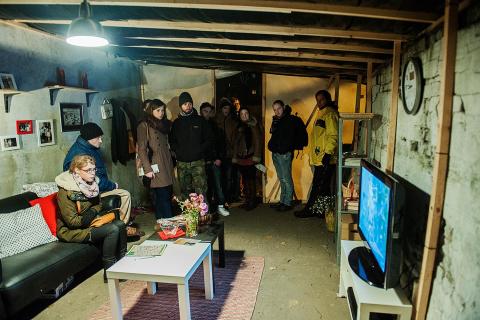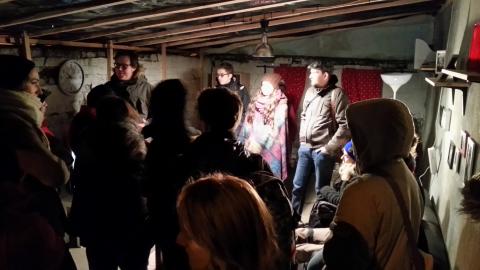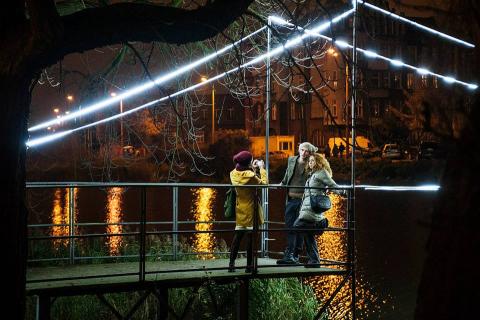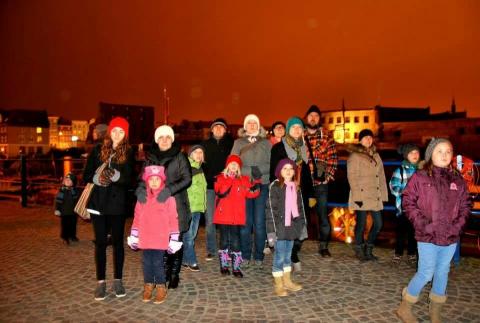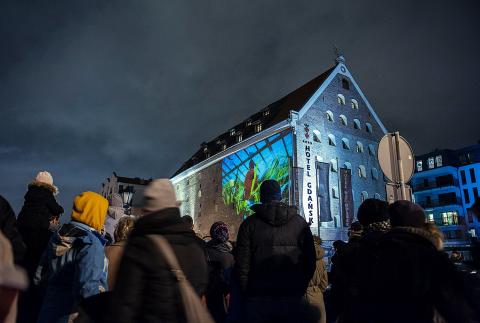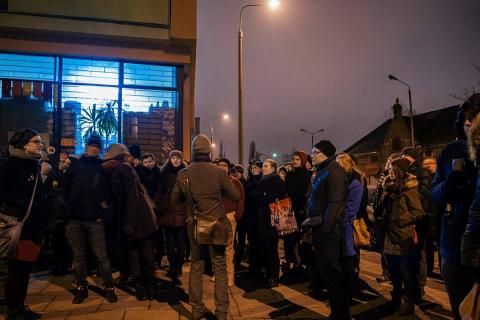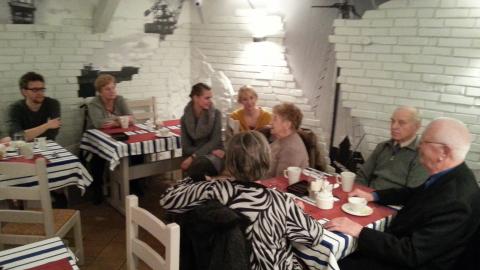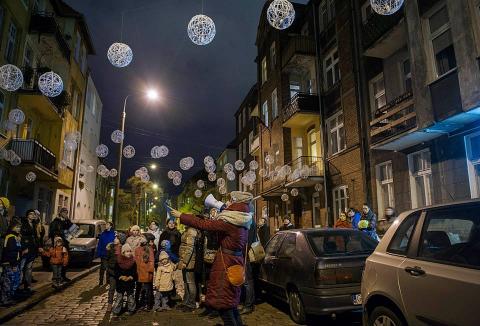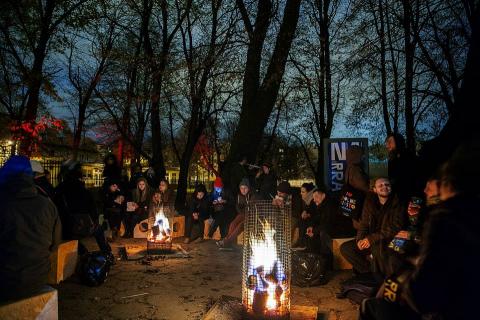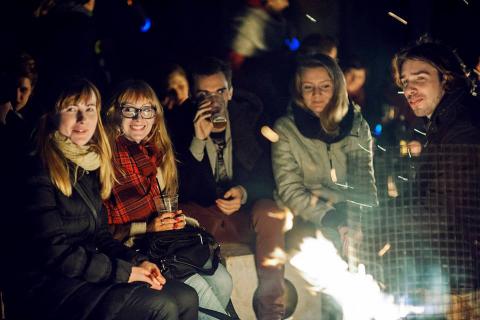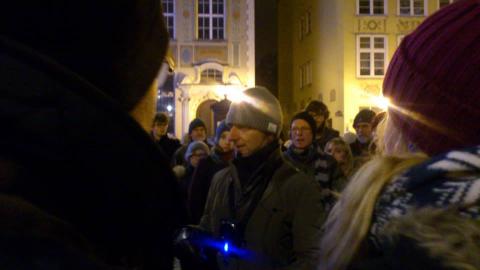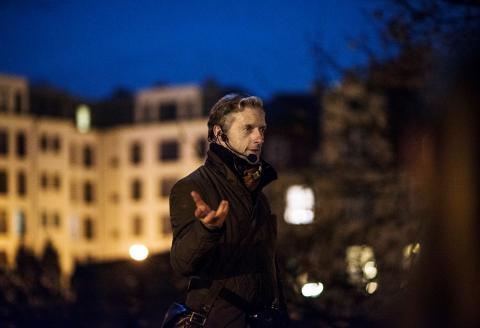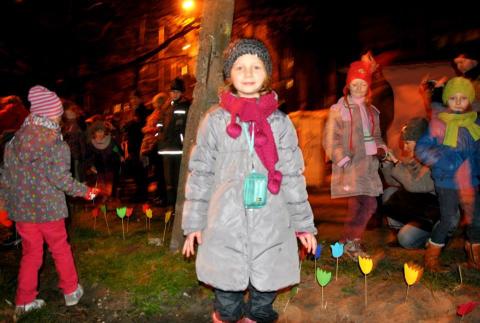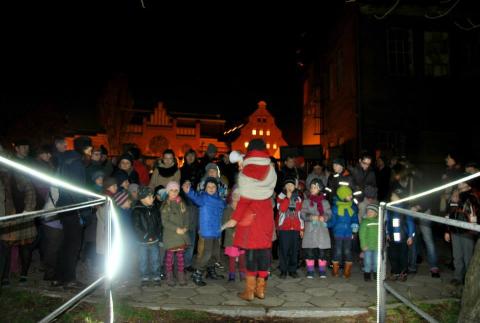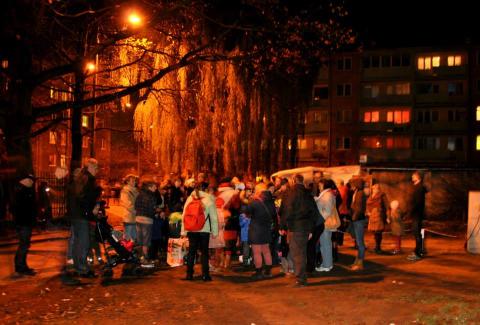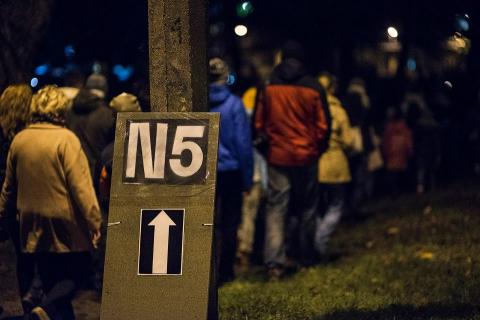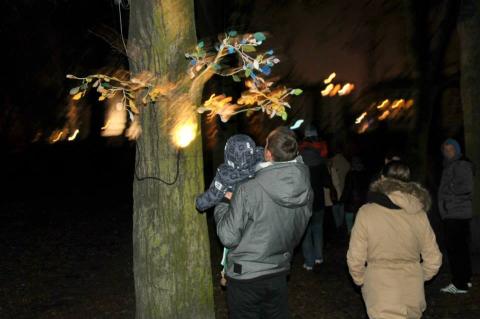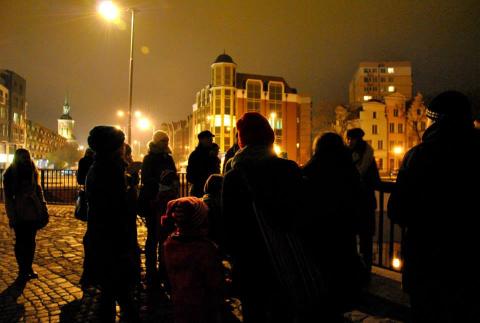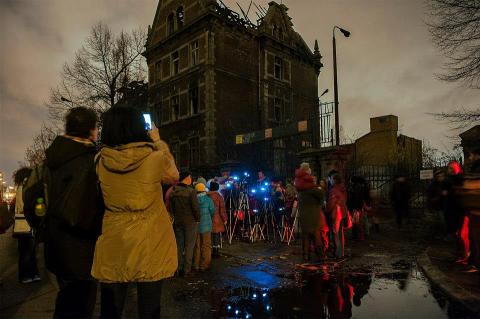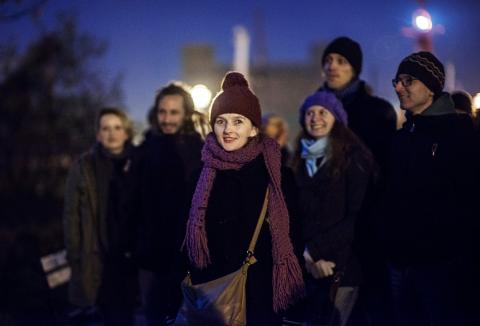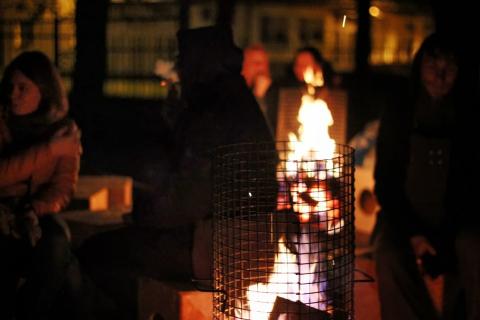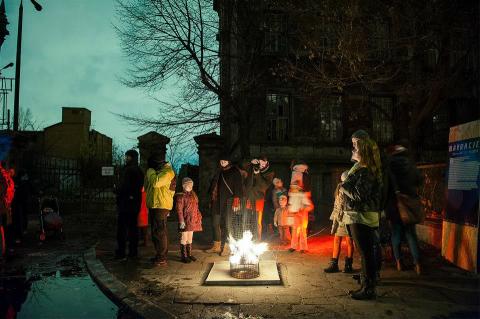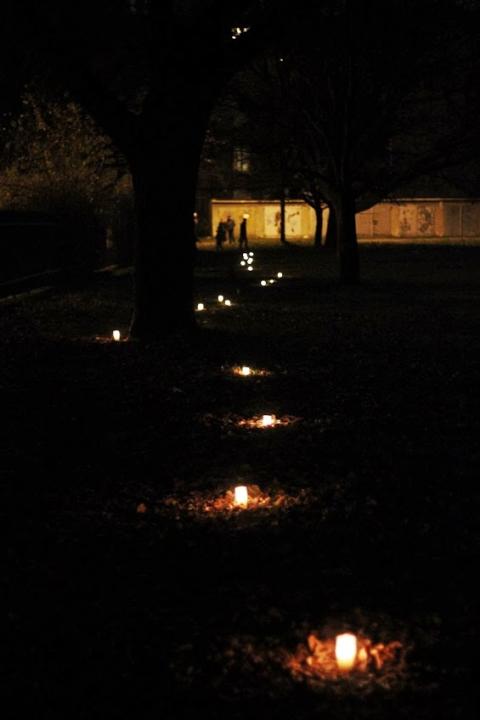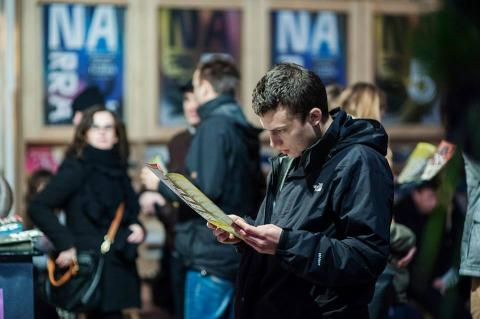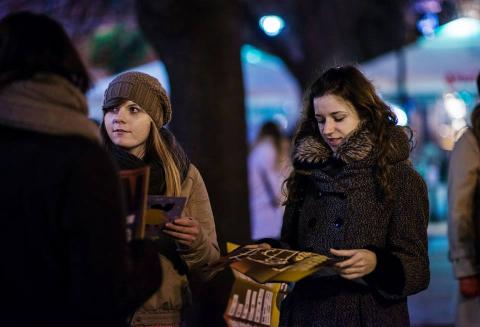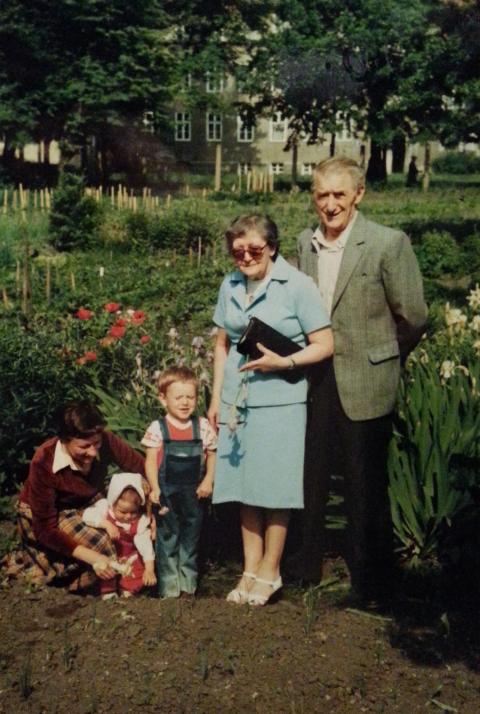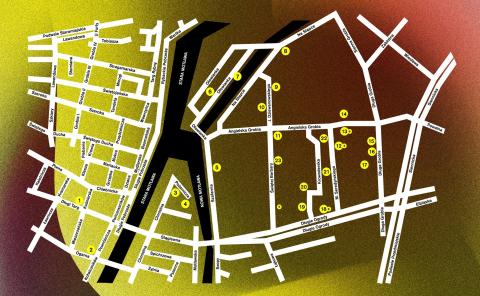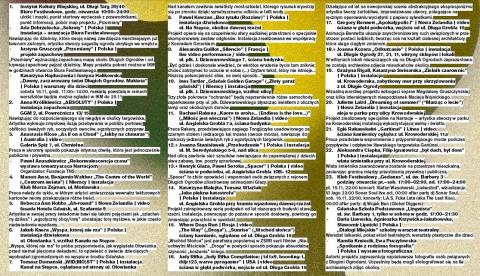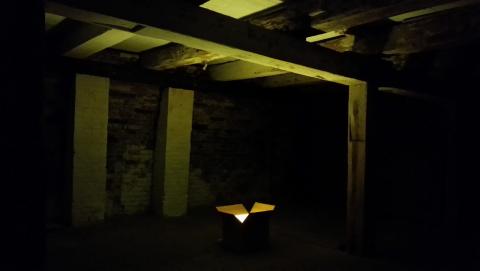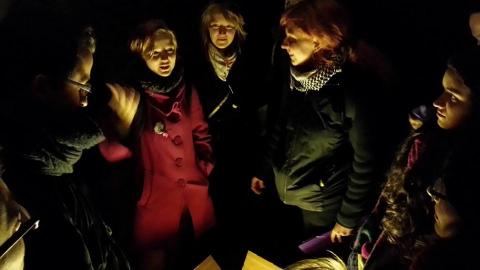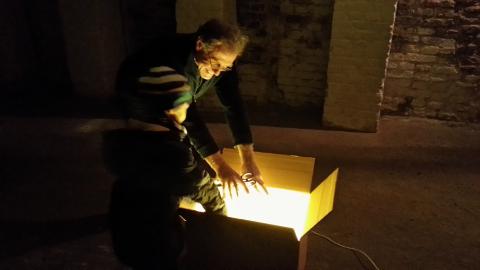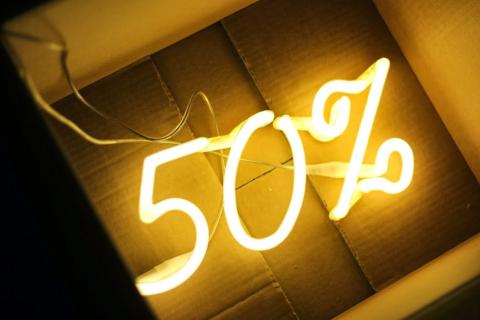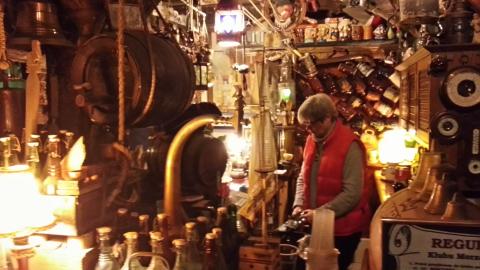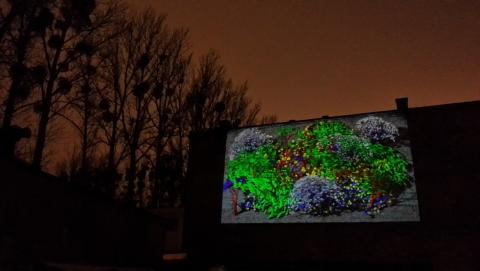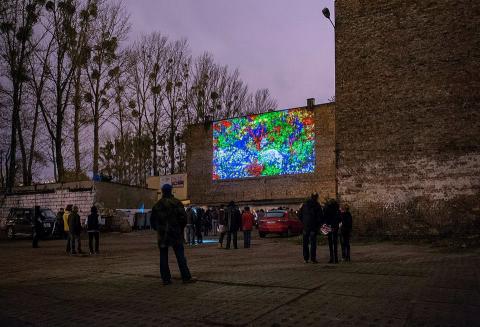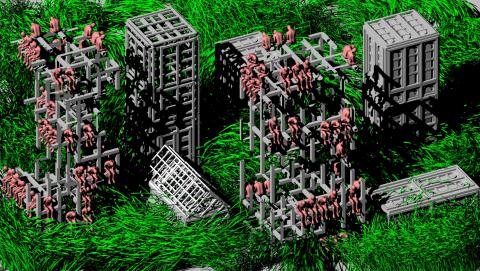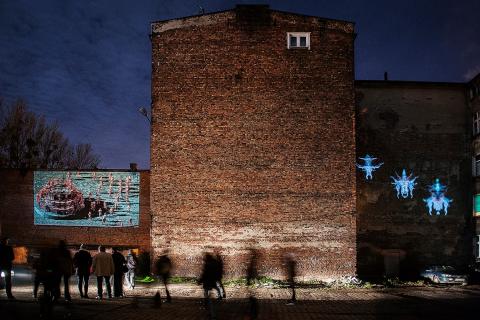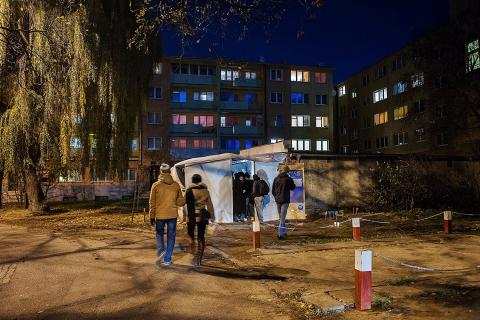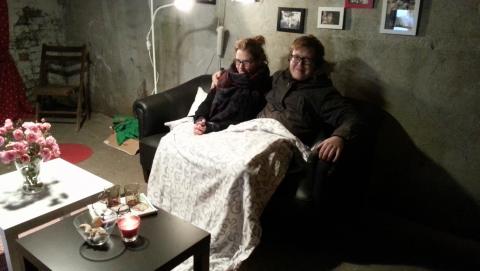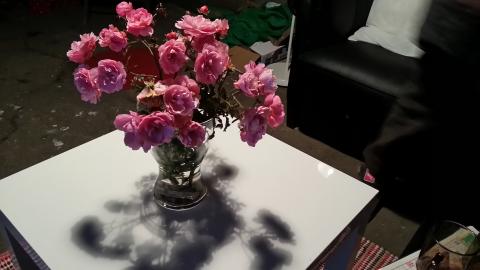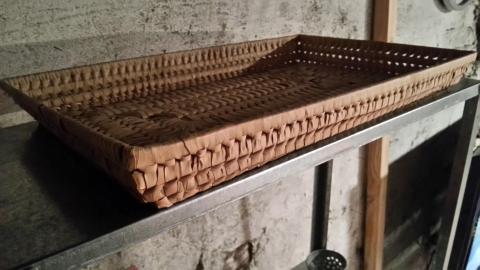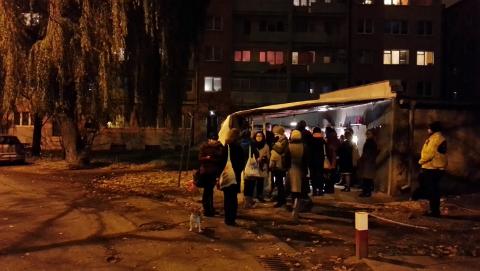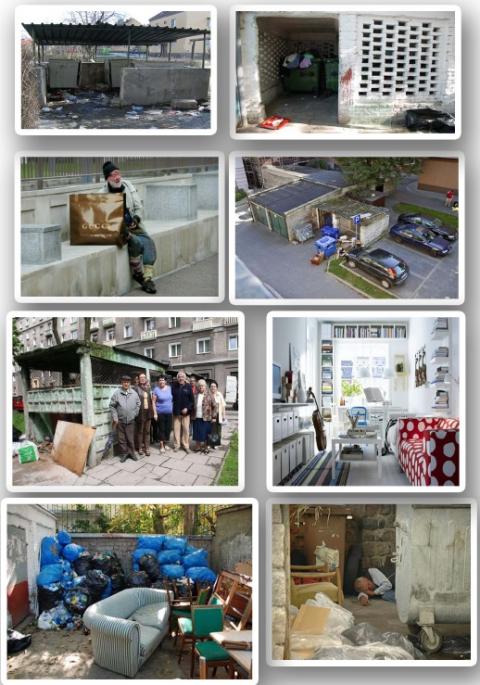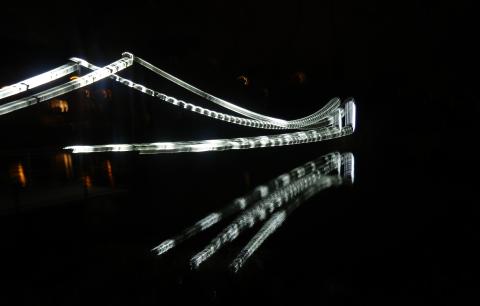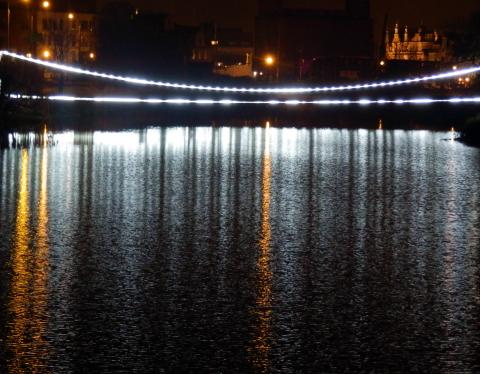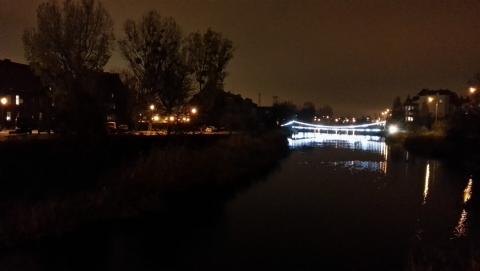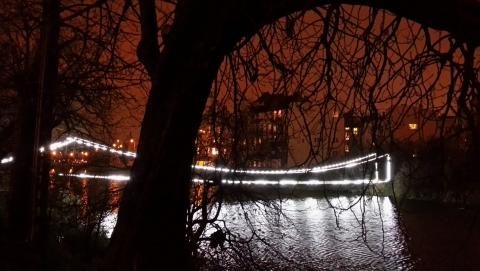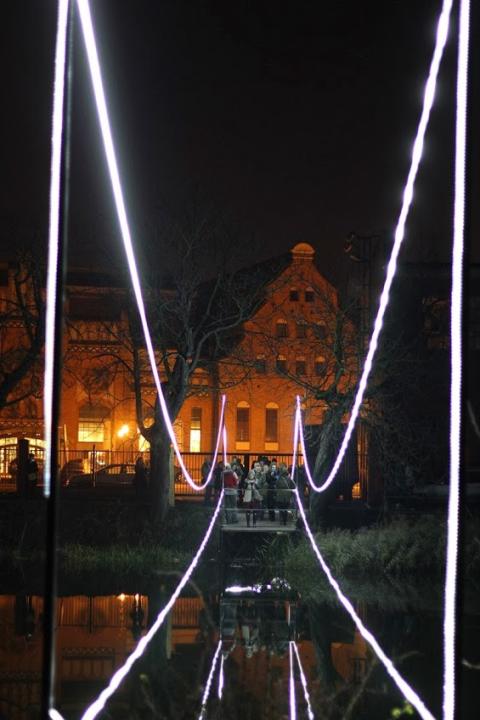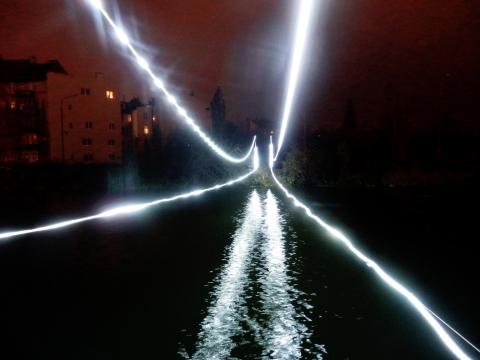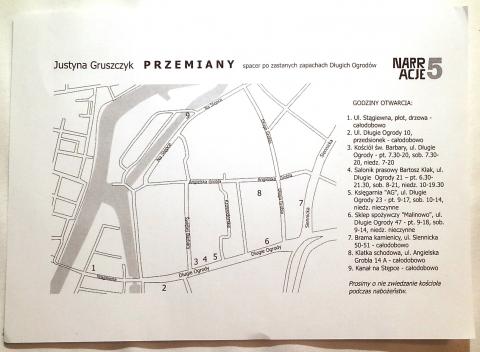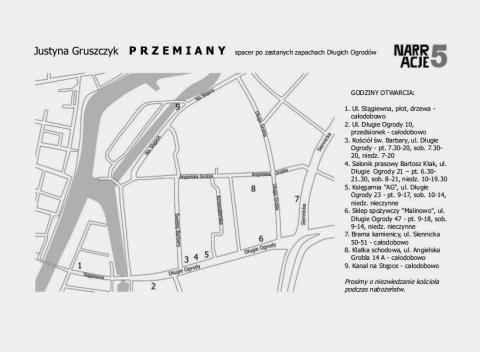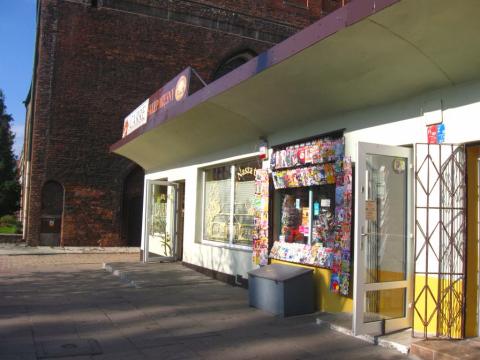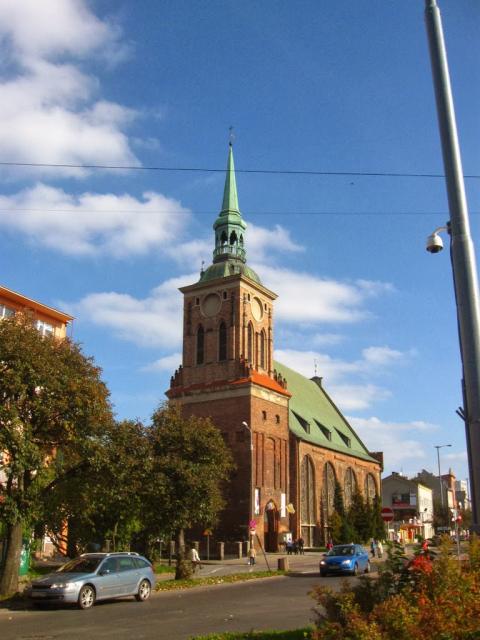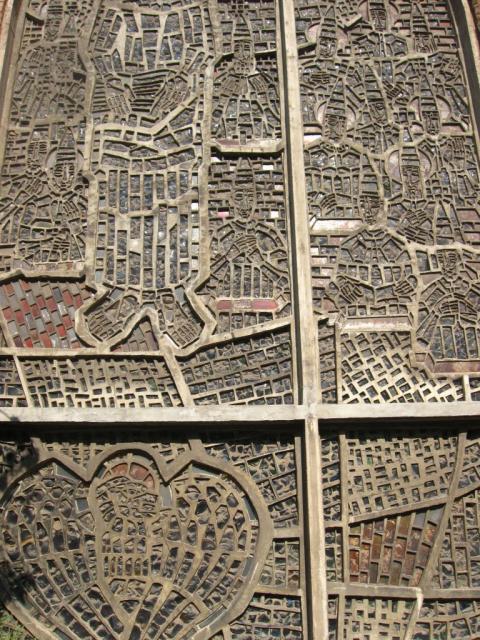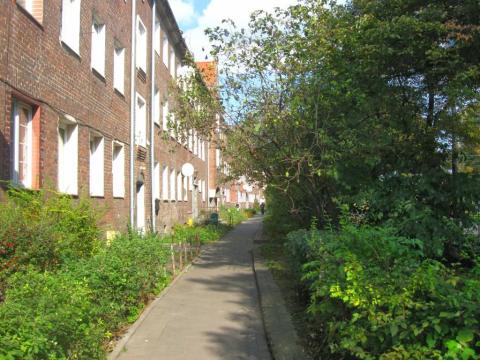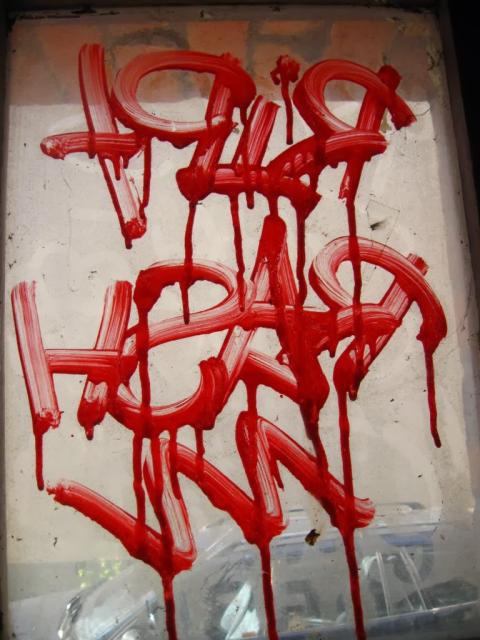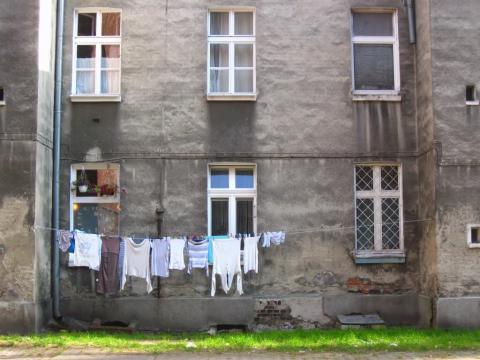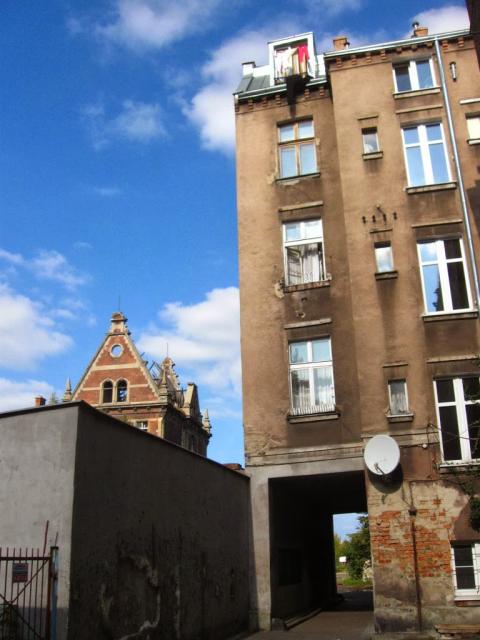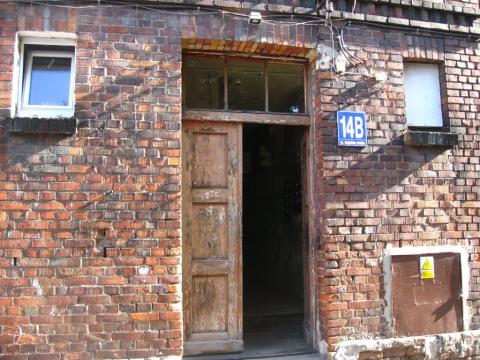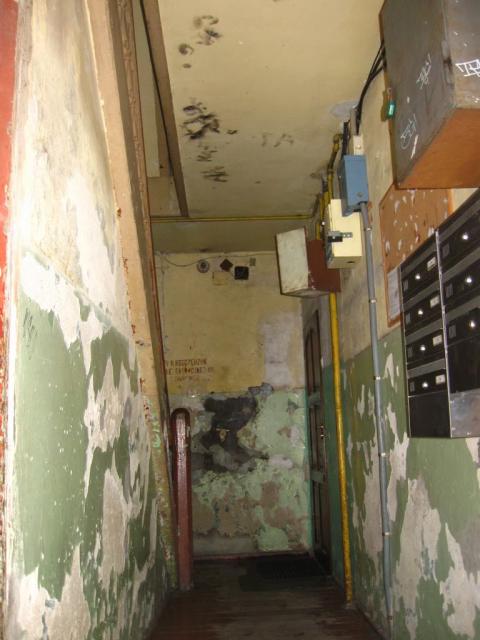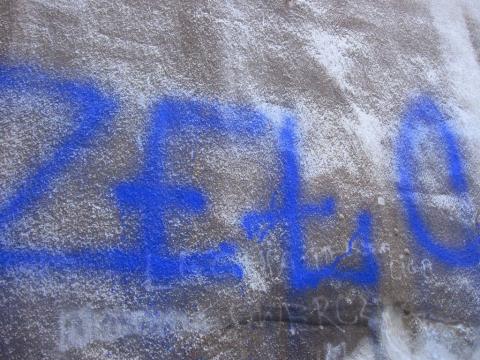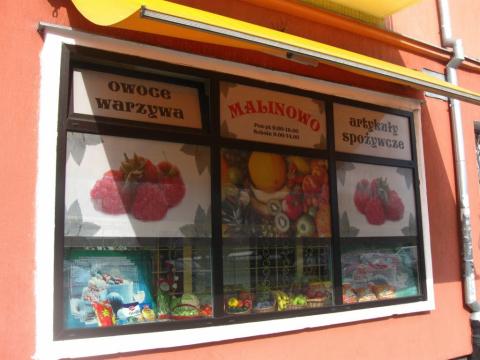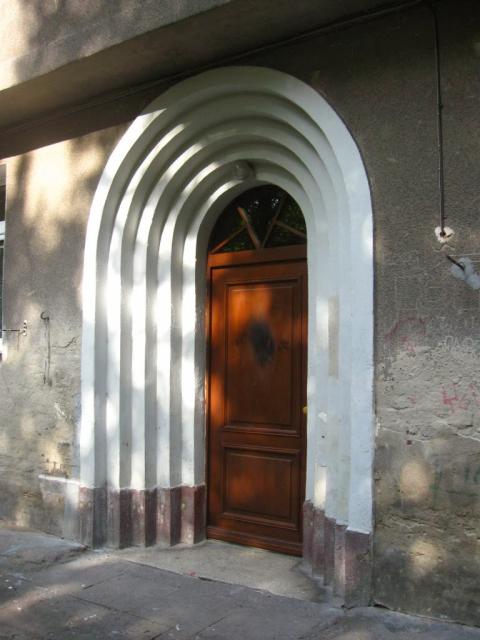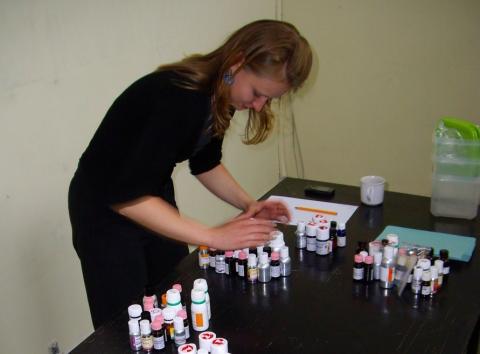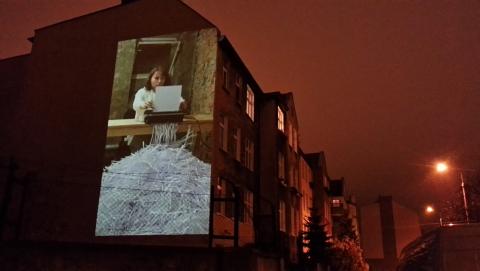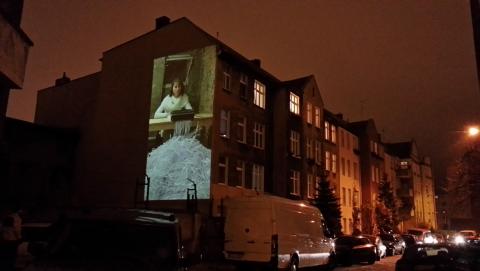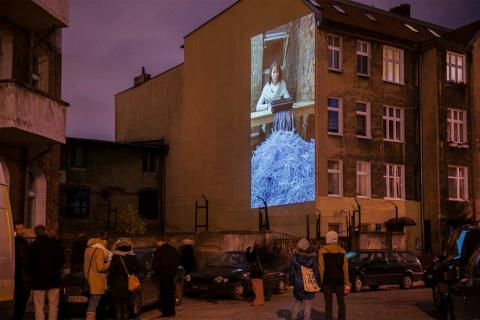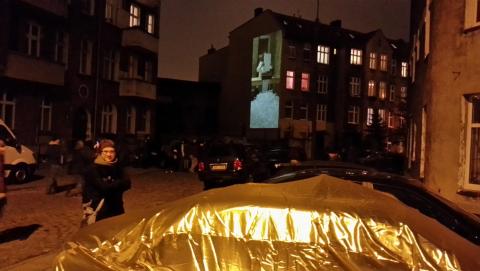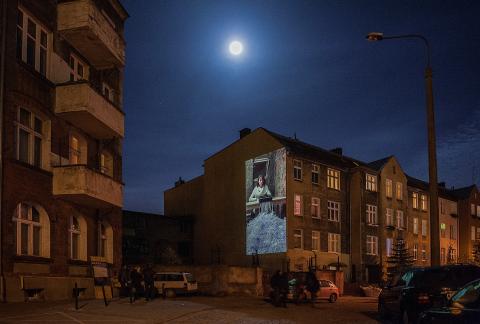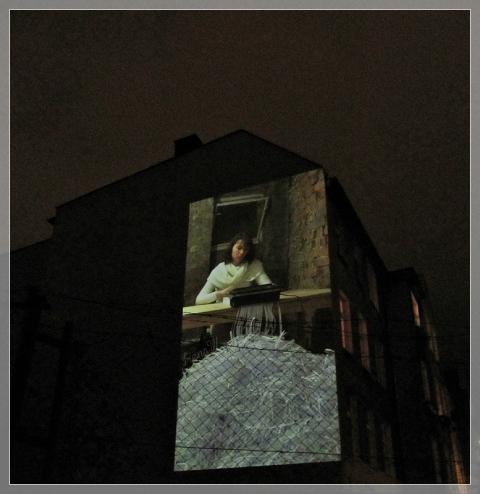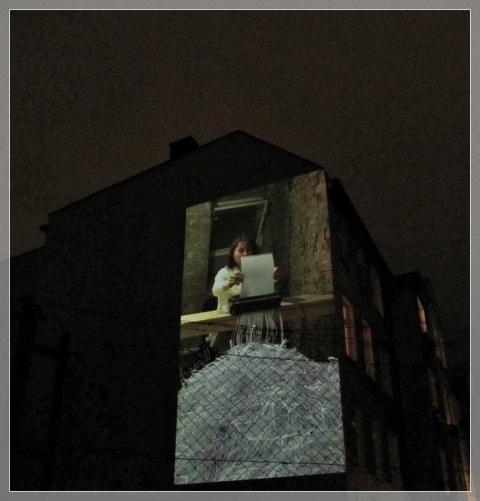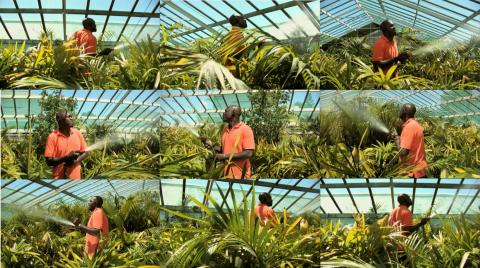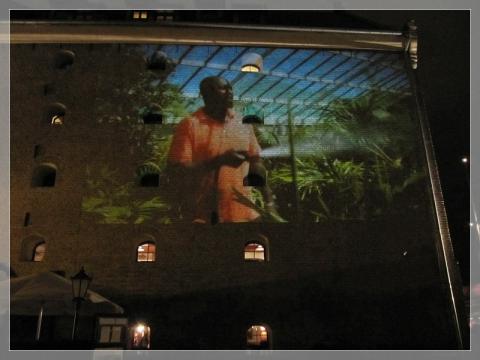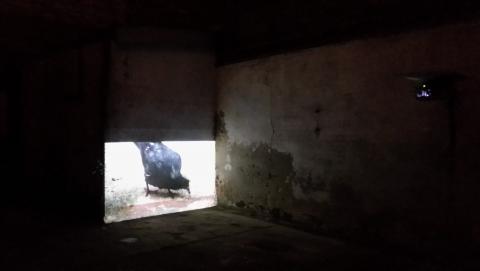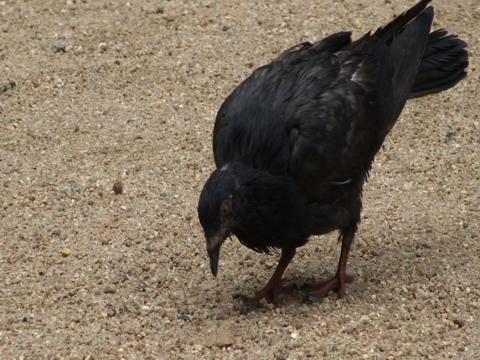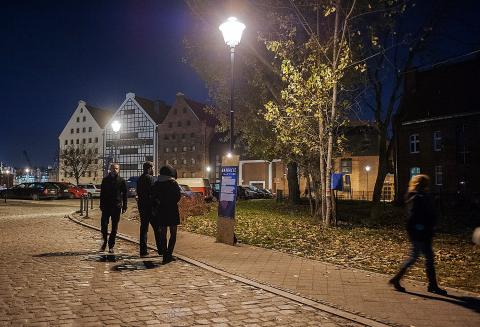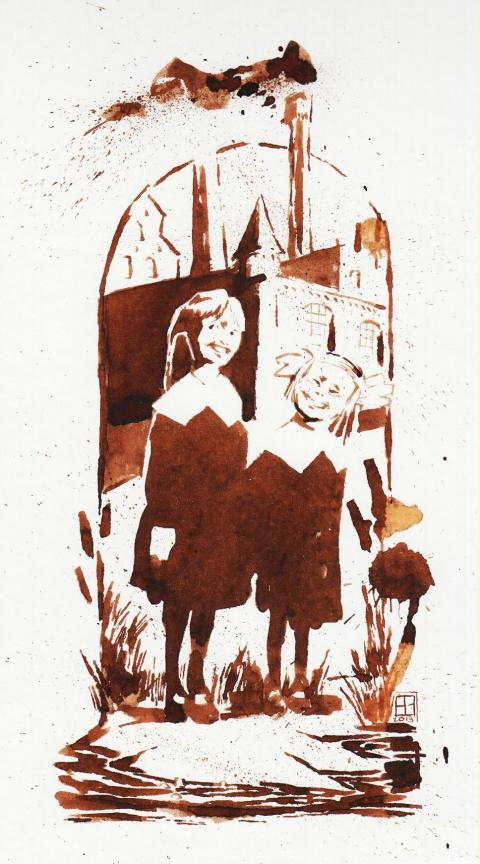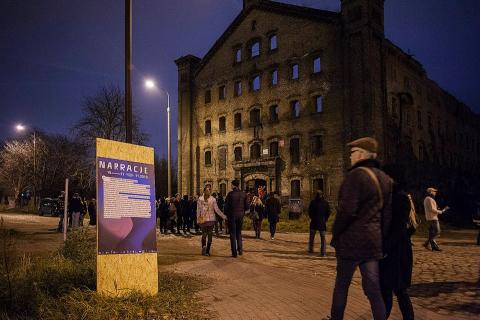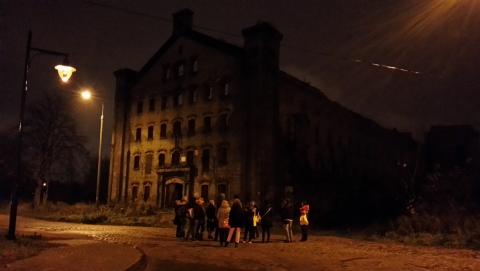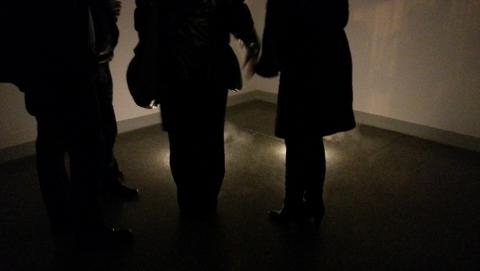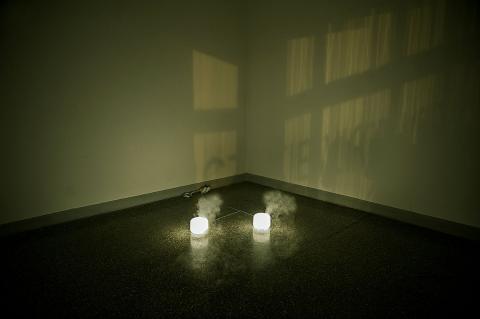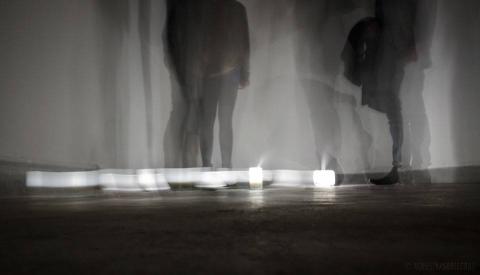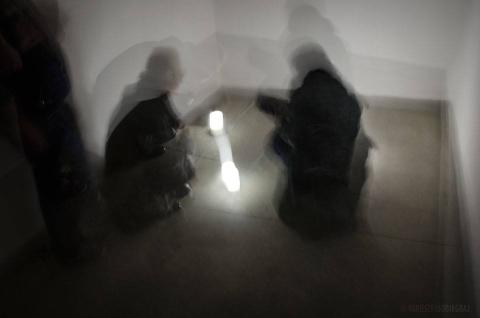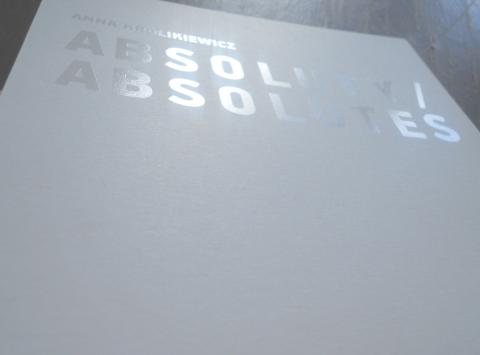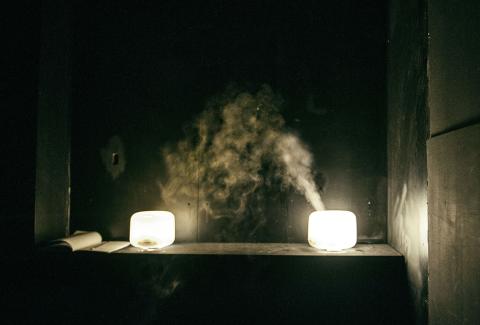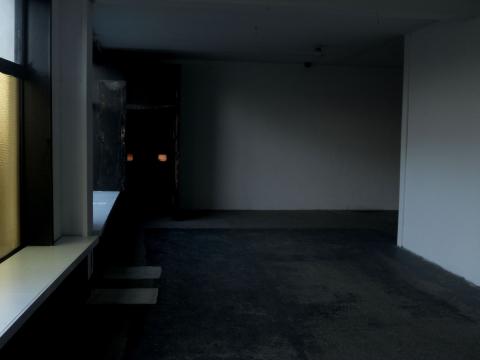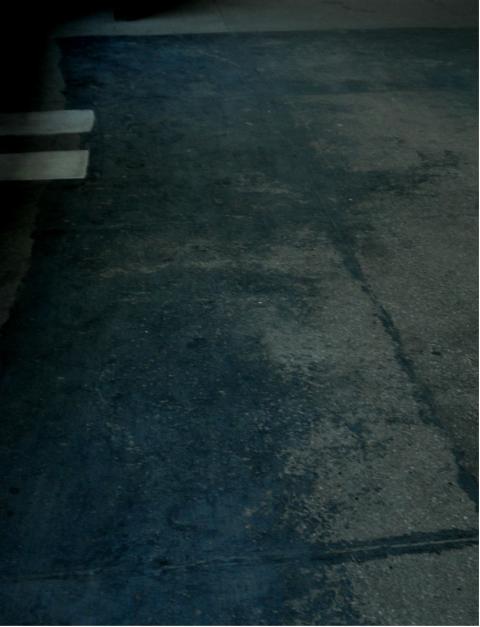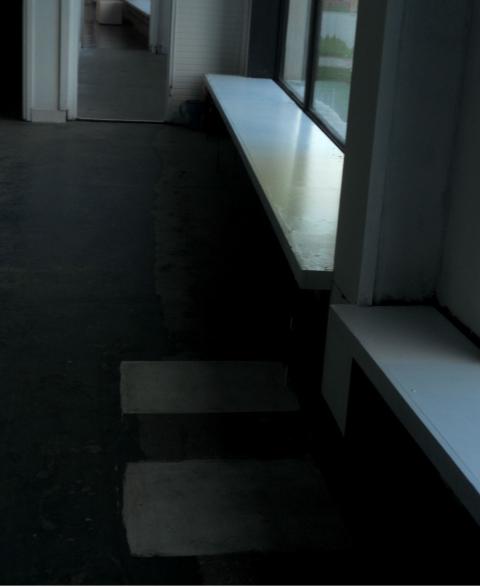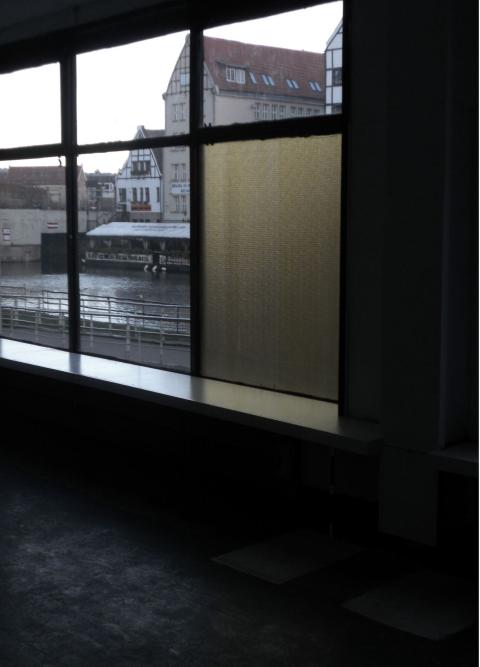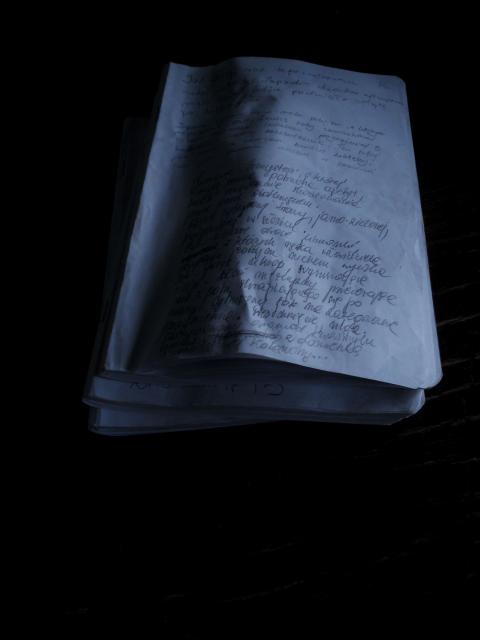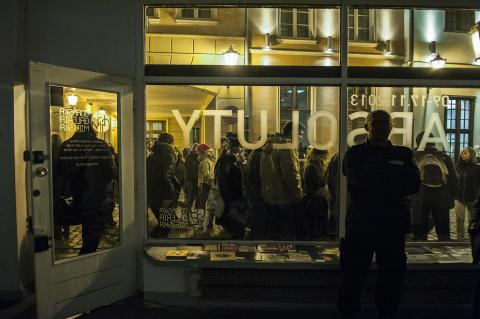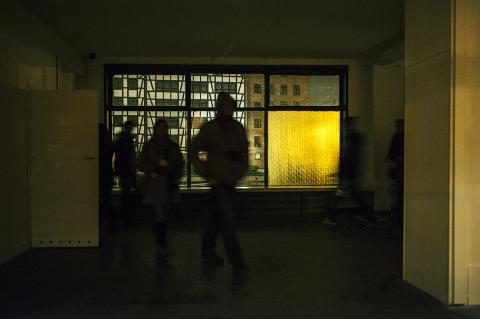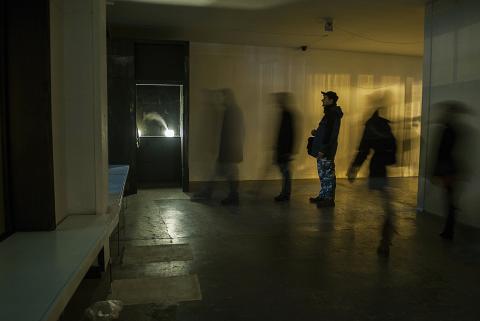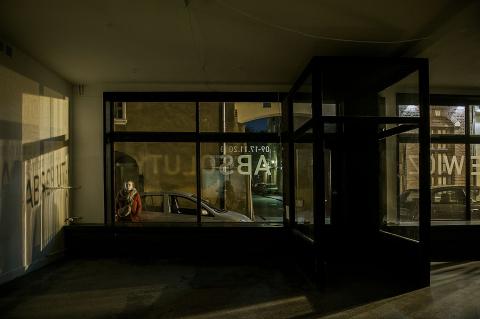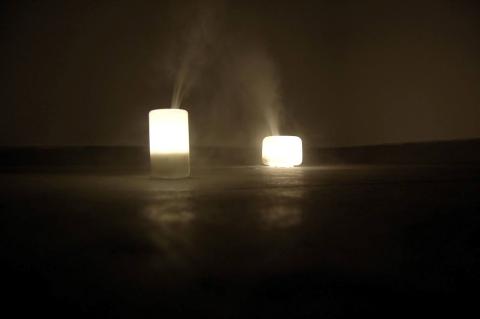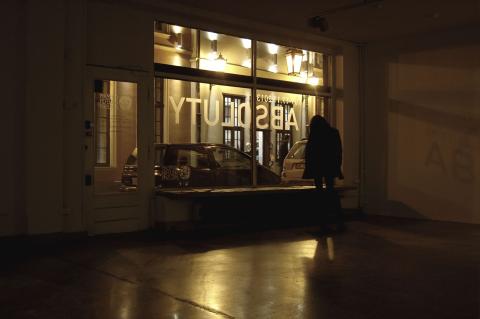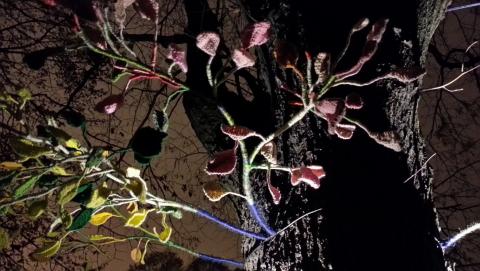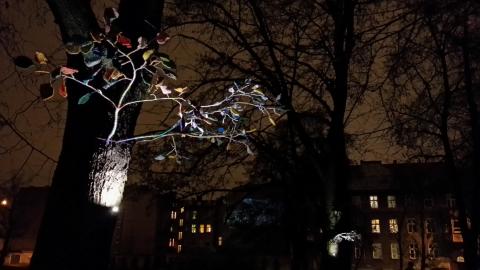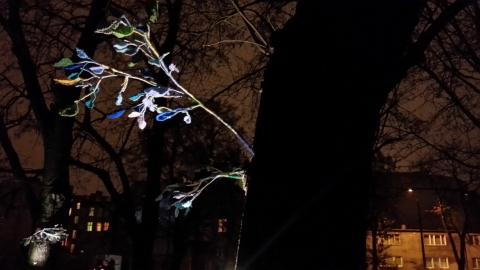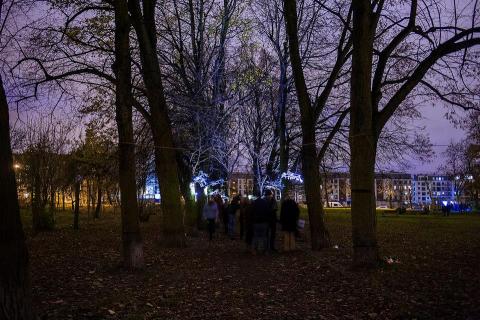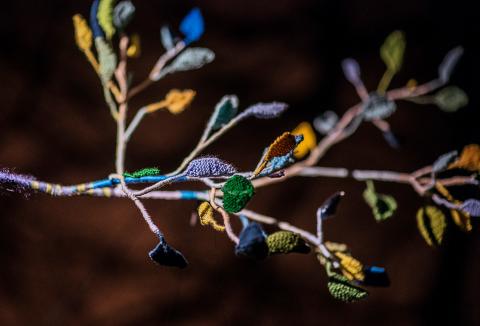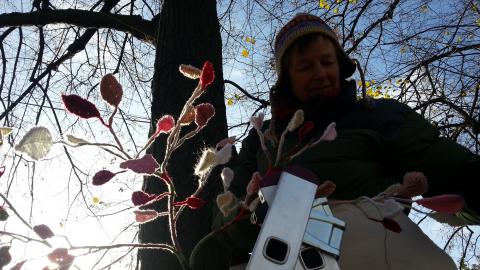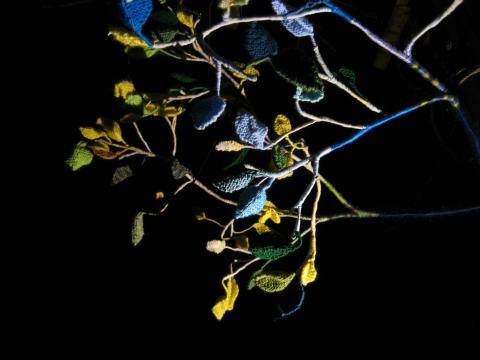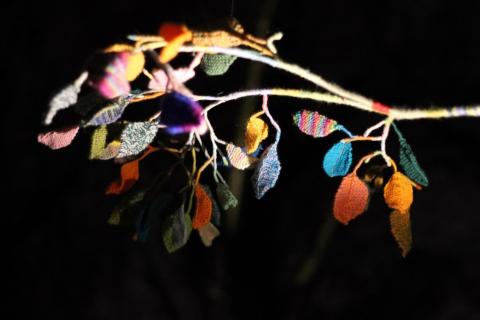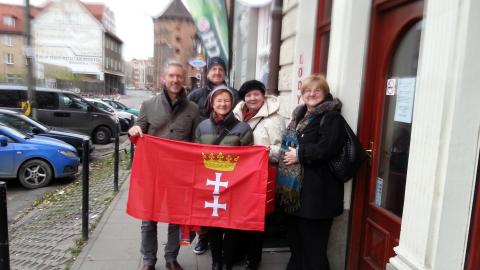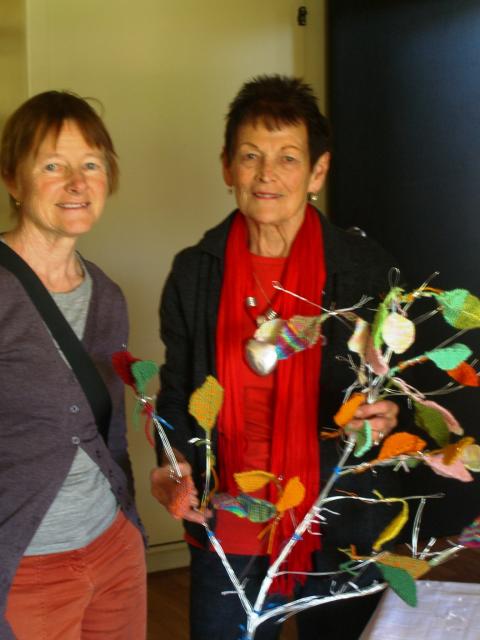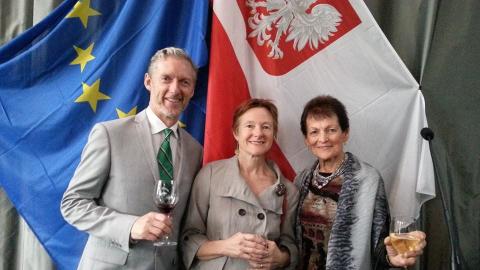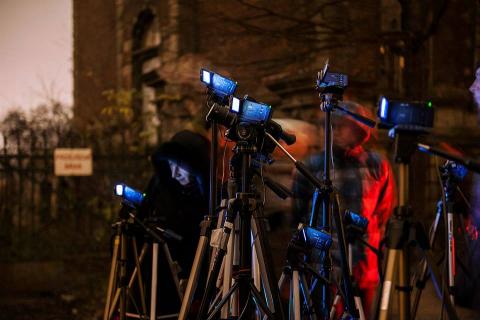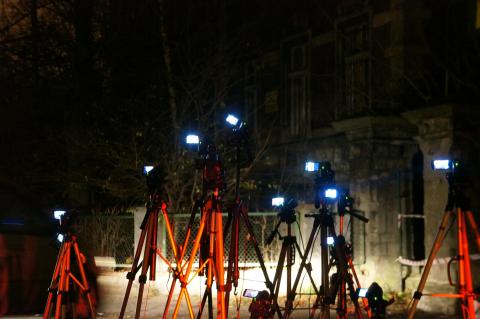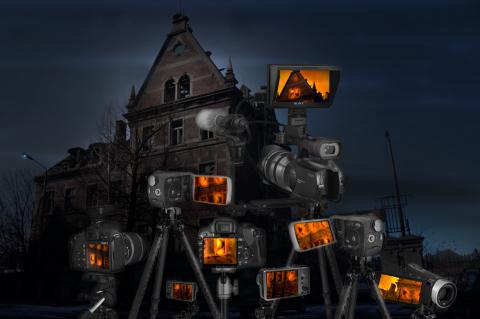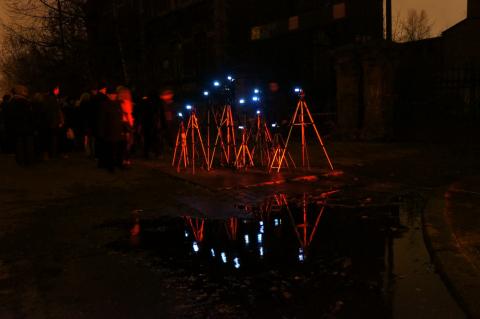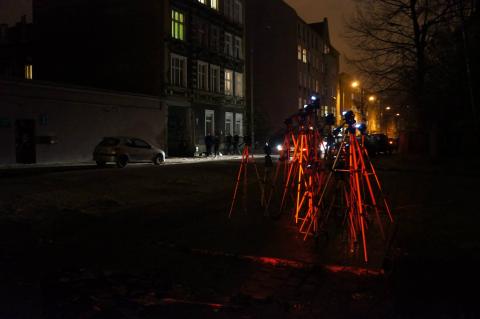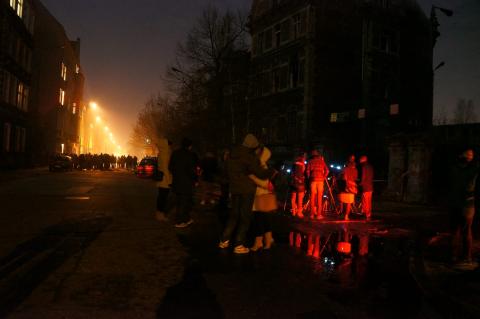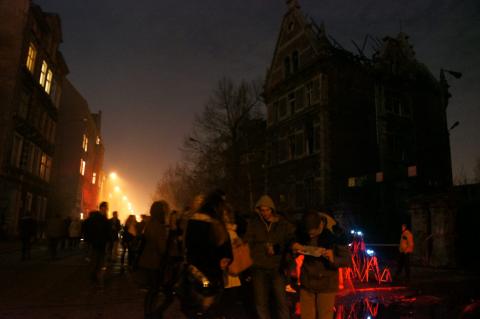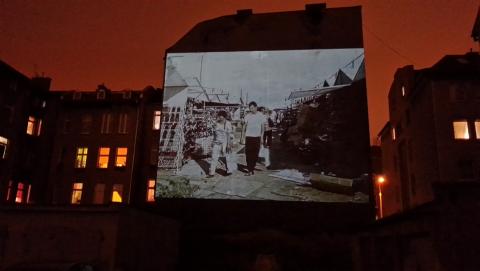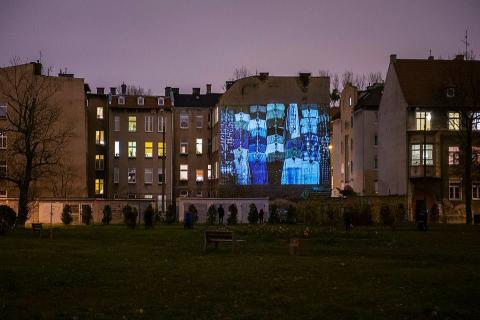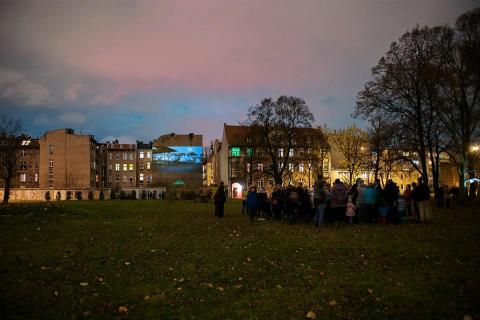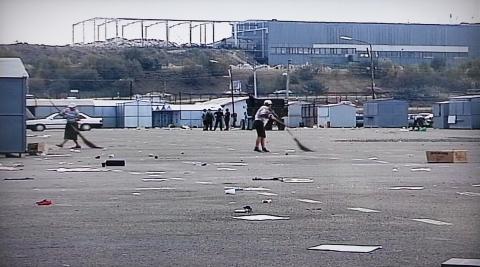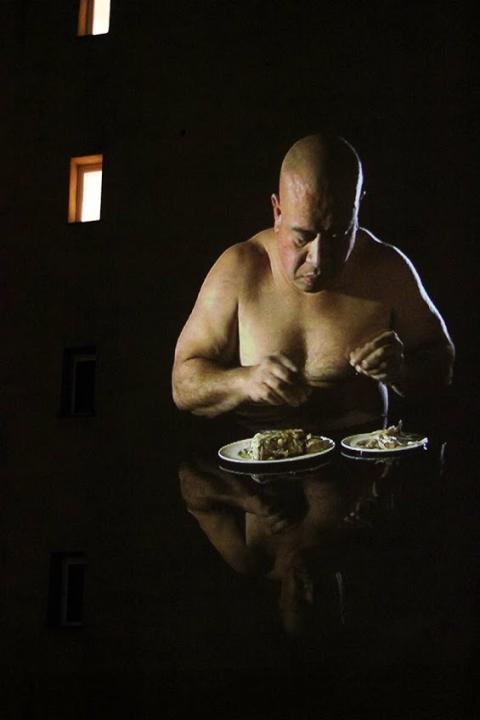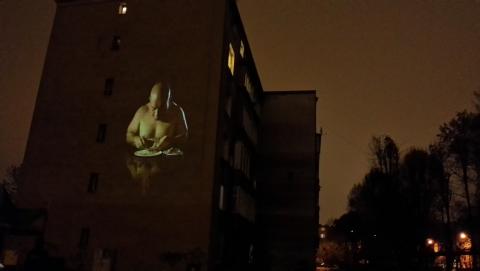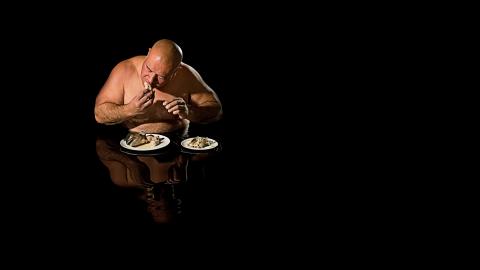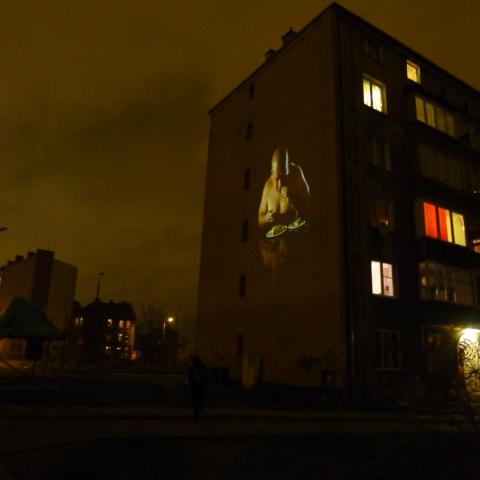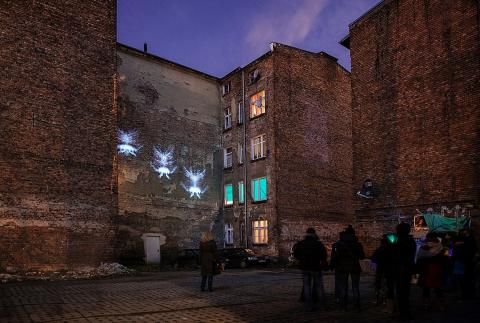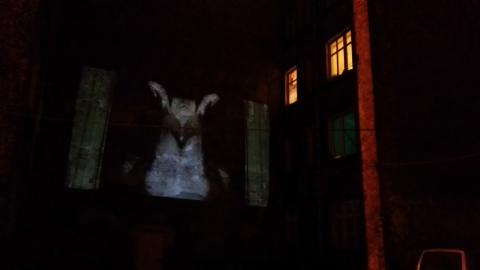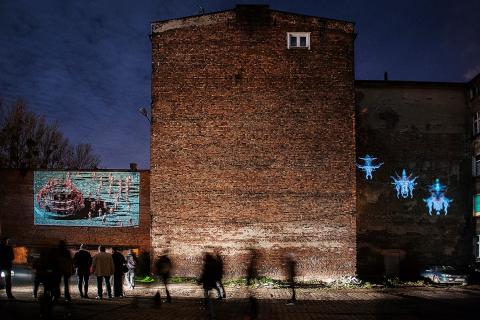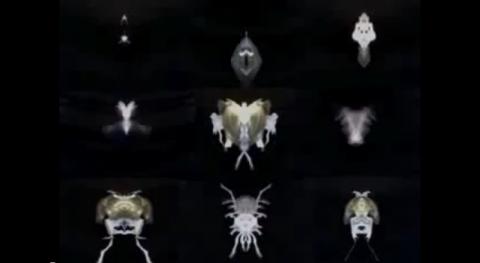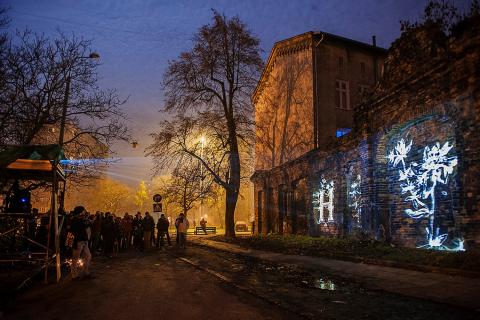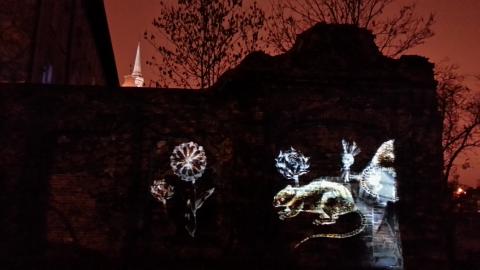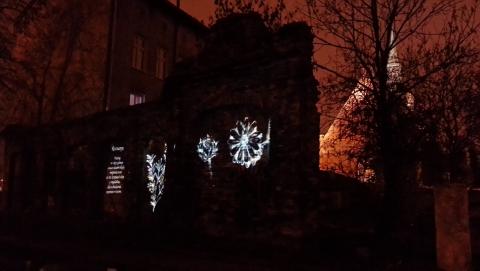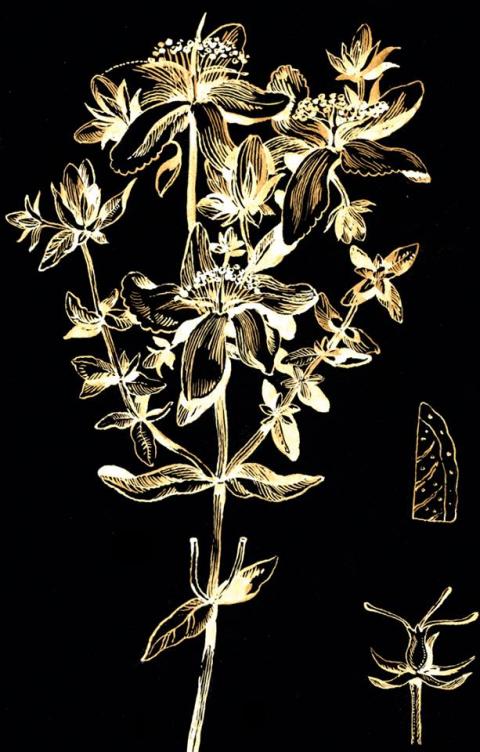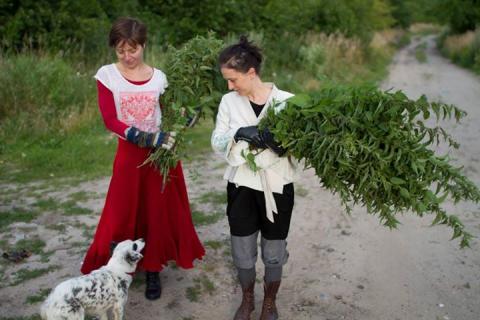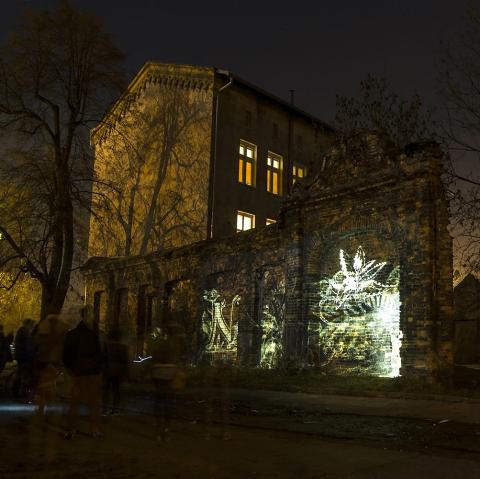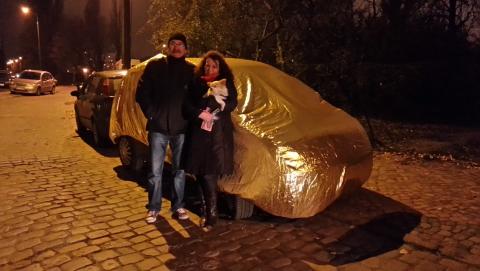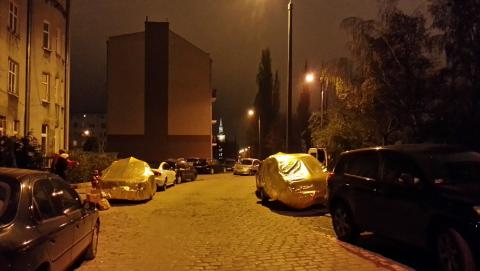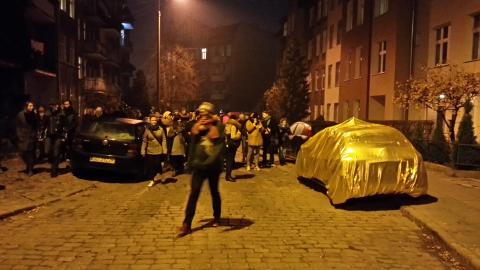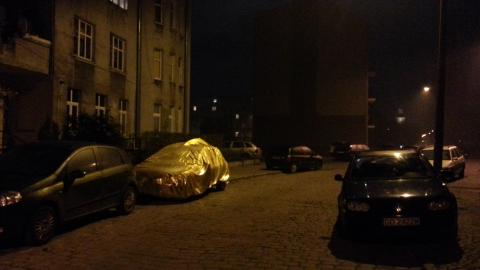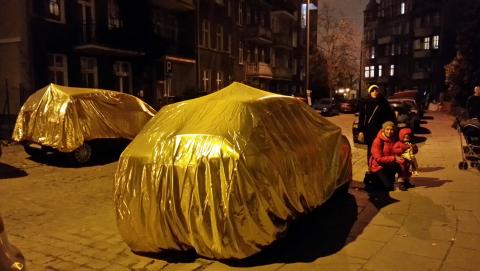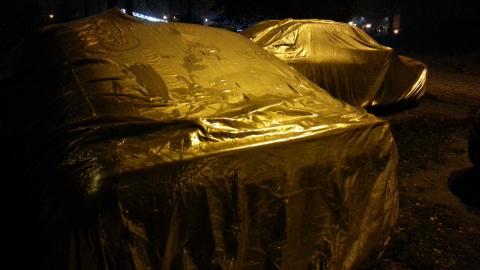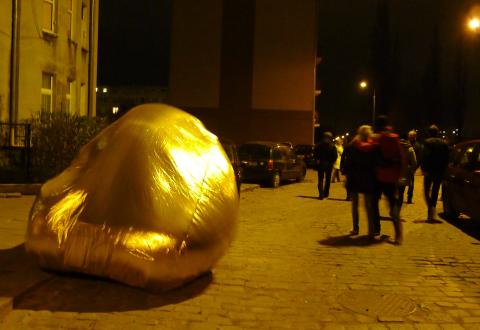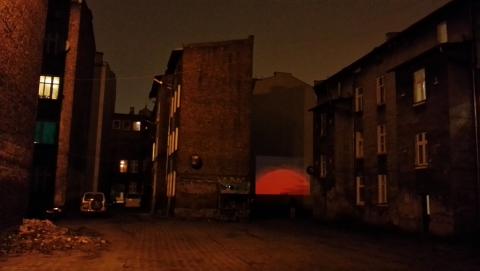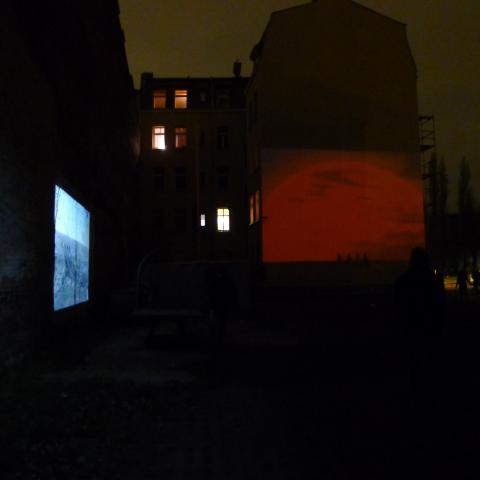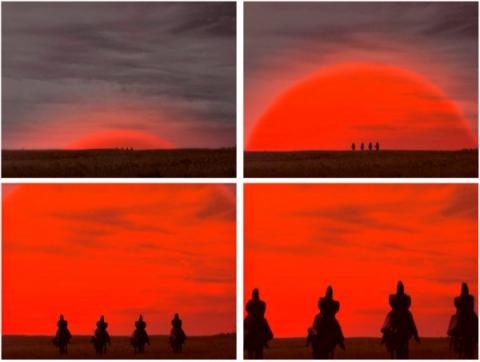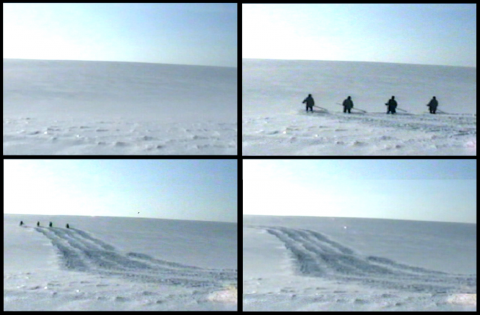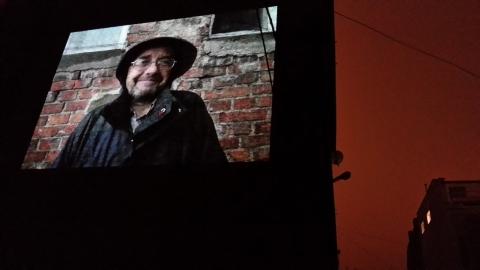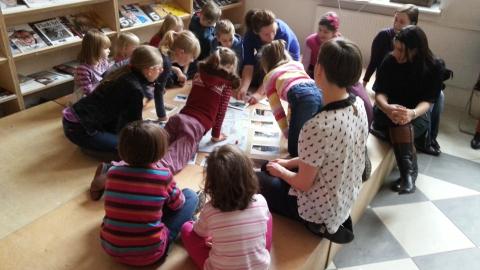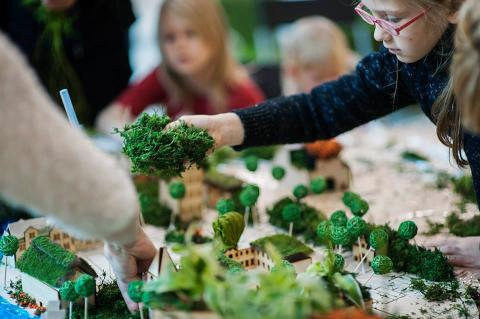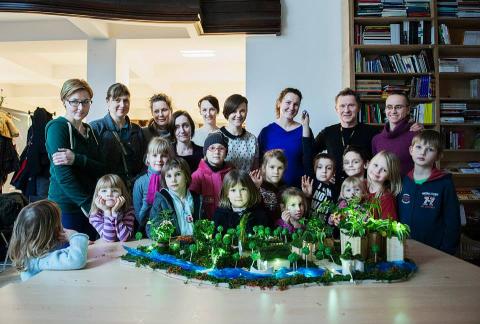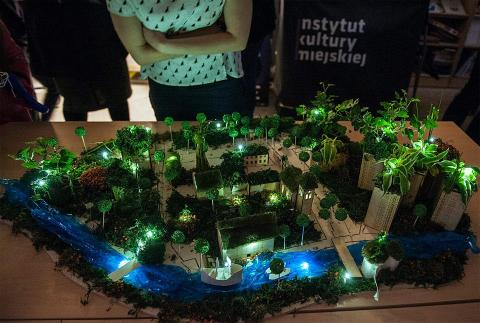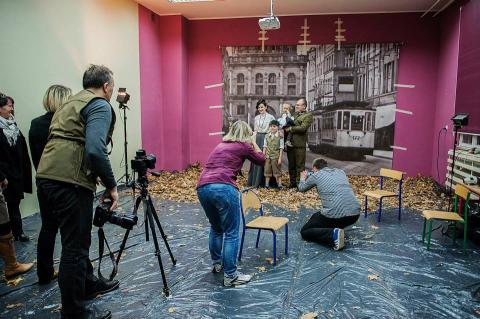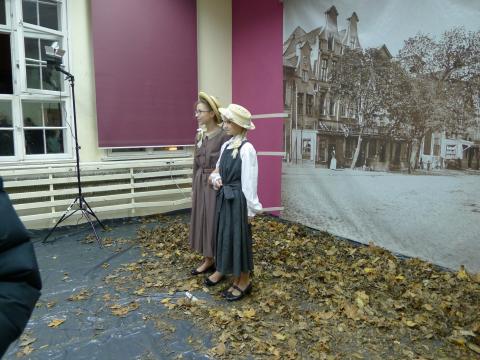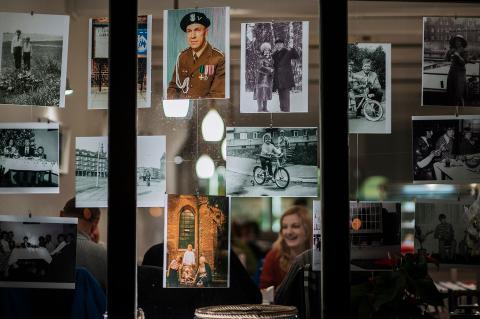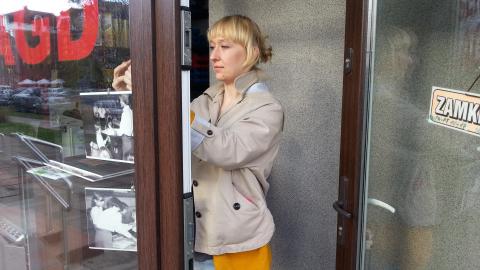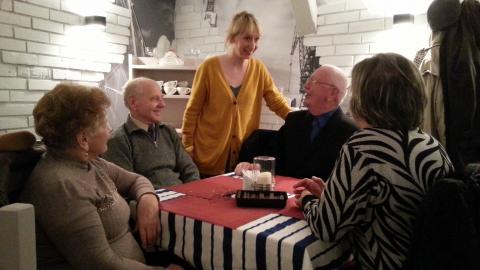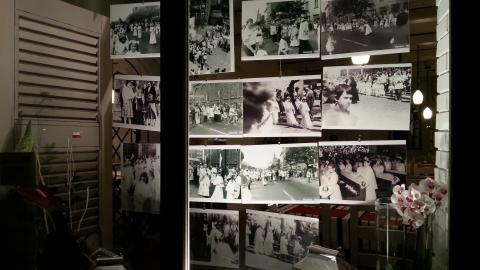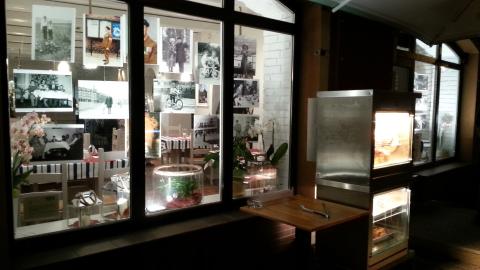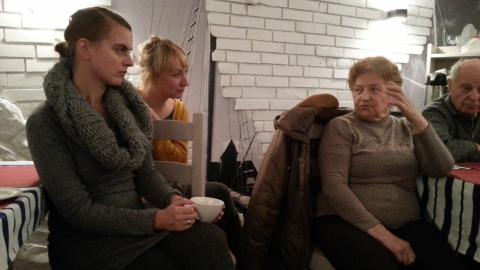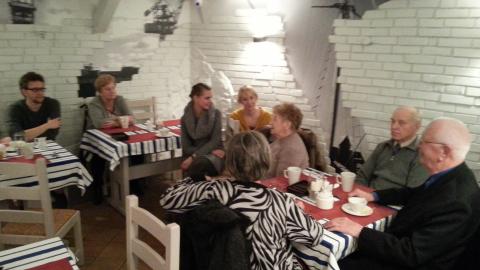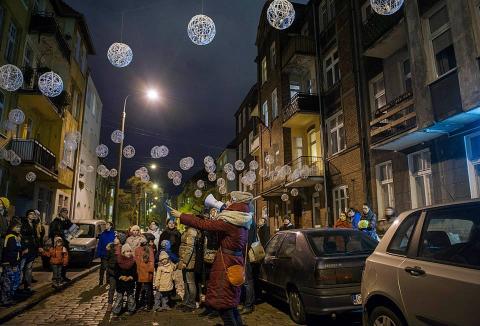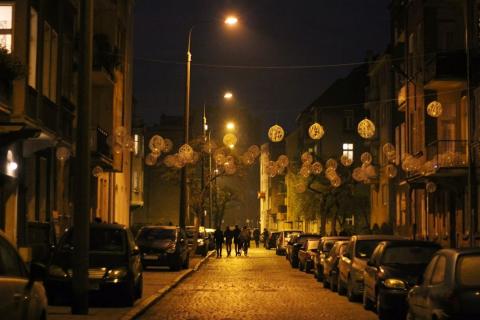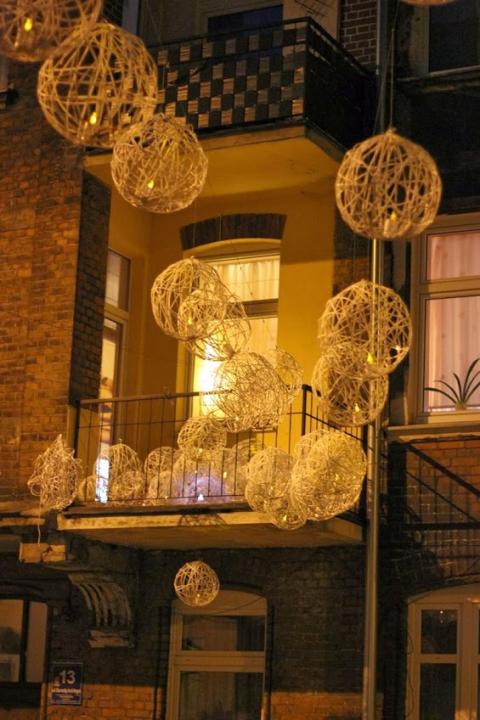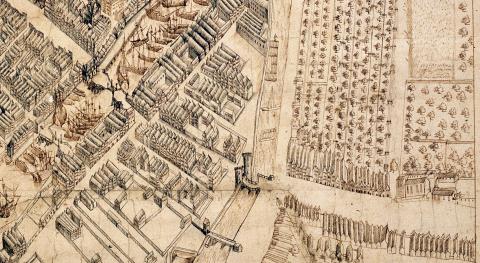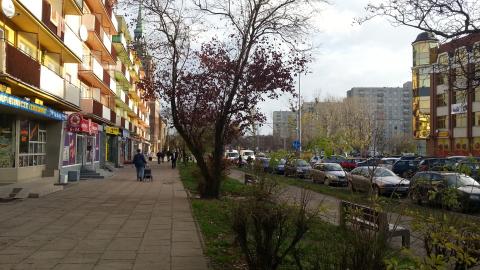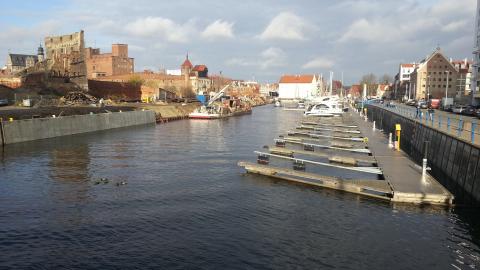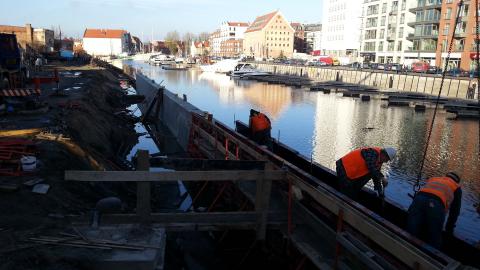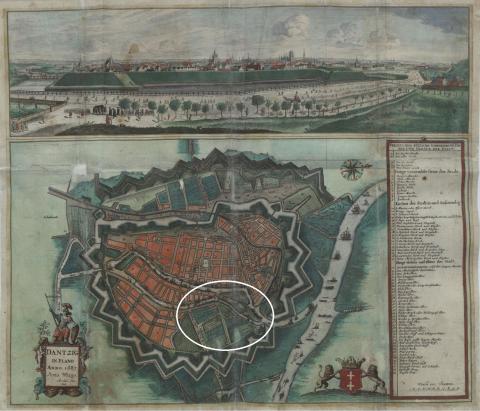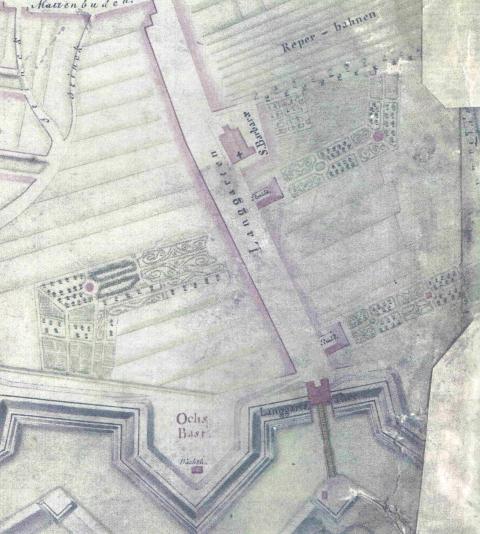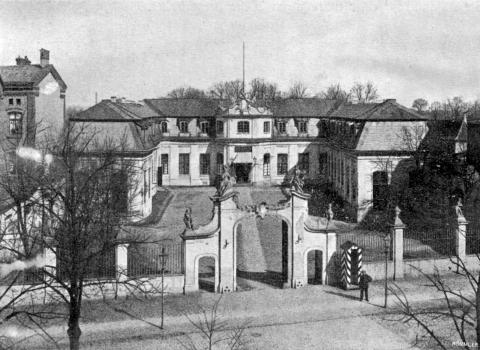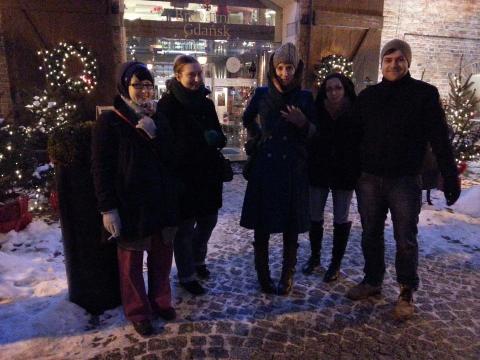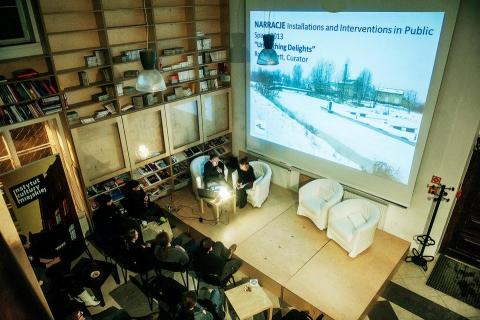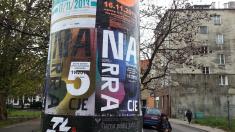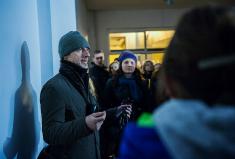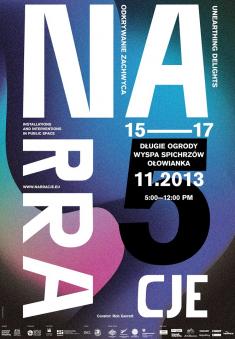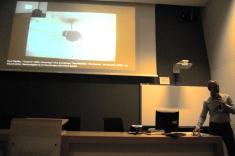Unearthing Delights
NARRACJE 2013, Gdansk, Poland
Unearthing Delights / Odkrywanie zachwyca
Markets, Memories and Meetings / Targowiska, spotkania, wspomnienia
5th edition of NARRACJE – Installations and Interventions in Public Space
15-17 November 2013
Długie Ogrody / Long Gardens, Gdańsk, Poland
Rob Garrett, Curator
ORGANISER: Instytut Kultury Miejskiej / City Culture Institute
CO-ORGANISER: Gdańskiej Galerii Miejskiej / Gdansk City Gallery
THEME:
By the end of the 17th century Długie Ogrody was only partially occupied and developed; and to this day it has remained as a district without name, intensive development, or a unified character. For the past 200 years it has been a field of possibilities. It does not impose a single style, or any particular aesthetic upon visitors. It is attractive for our Narracje project specifically because it is “un-made.” It is the perfect meeting place for things strangely familiar and uncommonly strange.
Temporary urban public art programs today are in some ways a contemporary parallel to the historic market place. In Medieval-Baroque Gdańsk, a wide public space was created in the heart of the former district of Długie Ogrody, on Ul. Długie Ogrody itself, between Granary Island and Brama Żuławska. It was an intermediate space where two worlds meet: the world of the local urbanite and the world of the rural dweller, the rafters, craftsmen outside the guilds, and of travellers. Like the old markets Narracje is a meeting place: a melting pot of ideas and creativity; a place for encounters between strangers and exchanges between friends; and an occasion for memory and affect.
Granary Island is emblematic of the intersections between past, present and new futures that interest us. Lying in ruins now for nearly 60 years, it has become a highly symbolic and hotly contested territory with many private and public interests vying for influence over its future. Our attraction to the island is partly motivated by its rich history as the city’s Water Market. But more than this, we are drawn to a special moment when artists, architects and writers turned it into an activist space from 1984, specifically to address the way decisions about public space and urban planning processes excluded the participation and interests of ordinary people and of the cultural sector. The cultural citizens who occupied Granary, made actions on it, convened symposia and wrote about it; at least for a while made it a public sphere. It became a meeting place for the exchange of ideas; and debates about power, planning, gentrification and citizenship. Their activism is a point of inspiration for “Unearthing Delights” which seeks to critically engage with the various relationships between the heritage traces, civic spaces, neglected sites, creeping gentrification; and the actual situations of communities in the wider territory.
In the spirit of that legacy “Unearthing Delights” invited artists to create projects that engage with the markets, gardens and communities of the former district of Długie Ogrody. Drawing on the historic fabric of the area and on aspects of the current situation, artists offered responses, both poetic and critically engaged, with scent, sound, light, moving image, story-telling, sculptural installation and community participation.
Narracje’s art projects and local initiatives set the scene for visitors to consider their own relation to various strands of the area’s multiple pasts; and to consider how these insights expand the life of the imagination and suggest new identities, social forms and public relations.
ARTISTS:
Manon Awst & Benjamin Walther (DE), Gregory Bennett (NZ), Aleksandra Ciapka & Filip Ignatowicz (PL), Tomasz Domanski (PL), Justyna Gruszczyk (PL), Alexandra Guillot (FR), Rebecca Ann Hobbs (NZ), Anastasia Klose (AU), Jakub Knera (PL), Paweł Kowzan (PL), Anna Królikiewicz (PL), Juliette Laird (NZ), Katarzyna Malejka & Tomek Wlaźlak (PL), Eglė Rakauskaitė (LT), Rachael Rakena (NZ), Judy Rifka (US) & Daniel Dibble (UK), Kasia Swinarska & Grazyna Rigall (PL), Ines Tartler (DE), Where Dogs Run: Alexey Korzukhin, Natalia Grekhova, Vlad Bulatov and Olga Inozemtseva (RU).
SITES:
The 5th edition of NARRACJE took place across a number of sites in the territory known historically as Długie Ogrody / The Long Gardens. The Festival trail commenced at Instytut Kultury Miejskiej / City Culture Institute and then move to Gdańska Galeria Miejska / Gdańsk City Gallery (GGM2) before taking in locations in the former granaries of Granary Island. Visitors could then explore projects in the area of the Marina, Ołowianka Island, Kanał na Stępce, Pułkownika Jana Dziewanowskiego; and parts of Długa Grobla, Angielska Grobla, Mariana Seredyńskiego, Krowoderska and remnants of the Mniszech family palace before returning along Długie Ogrody via the park on Świętej Barbary.
LOCAL INITIATIVES PROGRAMME:
The Local Initiatives programme, sponsored by the National Centre for Culture, involved an open call for projects aimed at engaging local residents as co-authors. Selections were announced in July 2013: Daria Lisewska, Agnieszka Krzywicka-Jakubowska and Sławomir Lipnicki (Urban dialogues); Joanna Stanislawek (Awakening); Pawel Seroka and Hanryk Glaza (Subjective guide); Joanna Kozera (Dusting); Kamila Kmiecik and Ewa Puczylowska (Meeting with old family photography); and FabLab Foundation: Katarzyna Hajduczenia and Justyna Halikowska (children's model of the Długie Ogrody area).
The Long Gardens in the 1980s (pictured above): Three generations of the Pawłowicz family at grandfather Leon Pawłowicz’s garden plot on Dlugie Ogrody in the 1980s (left to right): Maria, Katarzyna, Andrzej, Irena and Leon Pawłowicz (photo by Roman Pawłowicz and reproduced here courtesy of the Pawłowicz family).
DOWNLOAD the Narracje 5 guide map and program (PL) here (jpeg)
Media Links
"Rekordowa frekwencja i Długie Ogrody odkryte na nowo – zakończył się 5. Festiwal Narracje" by Urszula Abucewicz; in kowale.org
"Wspomnienia z Długich Ogrodów (Foto)" by Jarek Sopiński; in my3miasto.pl
"Opowieści z targowiska na Długich Ogrodach. Rusza festiwal Narracje" by Łukasz Stafiej; in trojmiasto.pl
Project Statements
Manon Awst & Benjamin Walther (DE)
“The Centre of the World” 2013
Cardboard box, neon text [“50%”] in a cardboard box
50 x 40 x 45 cm
“The Centre of the World” 2013, devised for the 5th edition of Narracje, is one in a series of works where the artists place unique neon messages inside a cardboard box which opens up a dialogue about social and spatial experiences of contemporary individuals. The 2013 Gdańsk piece plays with the idea of how we consume materials and energy, and how this relates to our planet and to our bodies. Harking back to the primal fire, the central hearth around which people came together at the beginning of civilisation, the piece questions what this might have been replaced by today: One feels attraction and warmth when looking at it, but on closer inspection one is confronted by a rather dubious message that unravels wider socio-political and ecological discussion.
Zejman gallery, occupying the ruins of a former granary, is perfect for “The Centre of the World”. The very fabric of its architecture, with the heavy wooden beams and the Dutch bricks which arrived as ballast in grain ships, takes us back to the city’s so-called economic and political heyday. Having survived the huge conflagration of the nineteenth century, when half of the granaries on Granary Island burnt to the ground through the spontaneous combustion of dry grain, the site stands as a remnant and points a questioning finger forwards and back through time.
Gregory Bennett (NZ)
“Apokalypolis I” 2013
HD video and audio
10 minutes (looped)
“Apokalypolis I” continues my exploration of intricately constructed virtual worlds populated by multitudes of de-individualized moving figures trapped in a form of uncanny life; bodies enacting a series of seemingly endless cryptic cyclic rituals, existing in a marginal state, neither dead or undead.
This work, conceived for projection onto an existing architectural setting, serves as a staging ground for a variety of both passive and active interactions between the figures and their often unstable or rapidly metamorphosing geographic and architectural settings. This is a world in constant flux, where time and space are ambiguous factors, and where elements are in state of persistent ‘becoming’, a state of both revealing and retreating.
3D animation software is utilized to order to realize these works, drawing on a range of representational traditions and influences from both art historical, moving image and popular culture sources where the multiplied body forms the primary subject.
Bennett’s animations use the synchronised movements of human forms en masse, running, stepping, bending, to create something akin to a corporeal architecture that is in perpetual flux. While they move over and around both utopian and dystopian built forms, the figures’ similarities of form, colour and gesture seem to constitute a structure all of its own which transforms space.
When this mass moves it does so as if with one mind, but it is not an automaton, it is a networked mind. They are colony-like; moving as individuals but seeming to share common purposes.
Aleksandra Ciapka & Filip Ignatowicz (PL)
“There was a roof, there was a home” 2013
Installation of furniture, domestic items and personal belongings in a community dust-bin area
Dimensions variable
“There was a roof, there was a home” was a provocative project from the outset, even in its proposal stage, because there was every risk that it might not be achieved. It might have been impossible to find a suitable dust-bin area for a site; the local community may have rejected it for any number of legitimate reasons, because they own these rubbish collection zones; and even if these obstacles were overcome, locals who the artists hoped to engage as participants, may have refused to come forward and to make it a place for their own expression. The artists proposed a platform, a stage; and the question remained whether it would be activated. Despite these daunting odds, the proposal was very attractive because it had the potential to give voice to the artists’ and locals’ various ideas of what home-making and finding shelter might mean in this territory that has so many historic and even recent populations of home-makers.
Tomasz Domanski (PL)
“Phantom Bridge” 2013
LED light strings across the Kanal Na Stępce
Dimensions variable
The proposal to suspend a “Phantom Bridge” made entirely of strings of lights across one of the waterways in the territory was attractive for its poetry, and also because of the recent local history of debate about creating a footbridge from the Main Town to Ołowianka Island. But the choice to place these strings of light across Na Stępce is also to conjure up the ‘ghost’ in the names of the canal: ‘Na Stępce’ and its earlier names ‘Am Kiel Graben’ and ‘Kiel oder Zimmer Graben’ all refer to the hidden part of a boat – its keel – and to the fact that the waterway is so shallow the keel may grab at the bottom; or perhaps the reverse, that the channel bottom grabs at the boat. The poetry of this artwork is its reminder that what ‘grounds’ us is often hidden somewhere beneath the surface.
Justyna Gruszczyk (PL)
“Transformations” 2013
Paper map indicating scent locations
“Transformations” is the first of two scent projects in this edition of Narracje, and these two projects form the precursor and threshold to the whole Narracje experience: firstly here with the map, as an idea and a quest; and secondly in a different project at GGM2. The reason these two are the first projects is because their power is deliberately not containing in the visual, in the appearance of things. These two projects will take us inside ourselves. Scent has an unstoppable power to transport us back in time and space to the memory of personal experiences and associations. Justyna Gruszczyk’s map invites you to seek out places throughout the territory that have made a scent impression on the artist; but she does not tell you what you will smell, nor presume to know what you will remember about yourself or about the scent. While you draw in the aroma of each (perhaps unfamiliar) place, we invite you to start the 5th edition of Narracje as an explorer of your own inner life.
KEY:
1. Stągiewna Street, strong, fresh and beautiful fragrance of dry leaves.
2. Entrance to the shopping passage at Długie Ogrody 10 - mostly the mixture of floral fragrances from the florist. Sometimes the fragrance is very strong and intoxicating, sometimes very gentle, or even weak.
3. Church. Smell of holy water, incense, old walls, and dust.
4. Newsagent. Fragrances of fresh print and aroma of paper merge with smell of soaps and washing powders. One of the most powerful spots on the list brings me into the places from other childhood, old chemist's shops, which no longer exist.
5. Bookshop. Fragrance of paper and fresh print, but far more elegant than the previous one.
6. Malinowo, grocery shop. Another time: vehicle, which brings me to late eighties, or early nineties.
7. Siennicka Street, passage in the tenement. Very stinky, the place is a counterpoint to the beauty of the fragrance of the florist's.
8. Staircase of the tenement at Angielska Grobla. Fragrance of old wood and dust.
9. The river, aroma of water and some things around - wet ground, apple trees and grass.
Artist's statement and impressions (post-festival):
"TRANSFORMATIONS" is an attempt to create a scent map of the Długie Ogrody district, discover the smell landscape of the area. In our perception, places seem to be dominated by their visual side, „Transformations” reverse the way we experience certain places pointing out those scents, that we normally don`t notice. The smells that are transparent to us in our everyday life. „Transformations” concentrate on smells as a sort of a data carrier, on which we store memories of past times. Brought back with smell, they can unravel the thoughts with the same intensity. That way not only the place is being rediscovered but also the recipient`s subconscious. The spectator reveals not only the new character of his surroundings but also a part of himself.
Apart from recipients' point of view, in "TRANSFORMATIONS" nothing has been changed. People, who experienced my previous projects noticed, that their sense of smell during the project had been unlocked, and when they were looking for the artificial fragrances created by me, they suddenly started to feel all the smells of the city. And that is how "Transformations" work - the project makes the sense of smell unleashed, ready to discover the reality and all the informations brought with the smells, because the greatest power of fragrance is the fact, that it evokes different feelings in different people. The experience of "Transformations" is an intimate and individual experience of suddenly discovered reality.
That is why I decided to wait with my own description of the smells of Długie Ogrody. Now, when Narracje Festival is finished, I want to share my impressions and thoughts.
Alexandra Guillot (FR)
Silencio, 2013
Performance (with video projection), duration variable, approximately 7 hours
‘Silencio’ brand paper shredder, 4000 sheets of paper, a chair, table and light
To be somewhere and perfectly well know that soon the sensation of being there shall disappear, to want to keep holding it against you, to want it to pierce you, leave you a scar so it does never really fade and to want it so much that the fragile tip of the sensation crumbles before reaching you and to leave still frustrated searching for another stronger one, another capable of durably of proving its reality. Enfin, one must go on, rivers flow, even though water does not change, held within its cycle. I am reading a text that does not exist... I destroy the potentiality of the words, in a way... [Alexandra Guillot]
It was only at the end of the 19th century that the place now known as Pułkownika Jana Dziewanowskiego became a street. Prior to that it was one of the waterways that criss-crossed the Długie Ogrody polder; and served a dual purpose of draining the flat land and providing inland access to river craft. Because of this former role as a waterway, the site was chosen for Guillot’s “Silencio” project as a place to remember the lost dialect and songs of the Flisacy, the Vistula raftsmen, street traders, craftsmen and entertainers who travelled to and from, and occupied this place, for many centuries. The project acts as a reminder of the now silent palimpsest of culture that has shaped this land.
The fact that we know about the lost dialects and songs of the 18th century Vistula Rafters and Gdansk Pedlars owes much to an 18th century publication which set out to record them, and this a good century before the development of professional collecting of folk music and the study of folklore. In 1762-1765, an engraving workshop in Gdansk belonging to M. Deisch (1724-1789) published a cycle of 40 etchings known today as 'Die Danziger Ausrufer' (The Gdansk Criers). The etchings show street traders, craftsmen and entertainers, and the texts of the verbal and musical cries of these pedlars in a notation that is close to the living original encountered in the streets. The author of the musical record (who may have been Kunegunda Czacka, an aristocrat and a talented promoter of art) tried to record with precision the significant differentiation in the rhythm, the temporal progress of the cries, and even attempted to record the movements of the criers, also using non-standard signs. While recording the cries in musical notation may have caused them to be smoothed out to some extent; it is because they were recorded and published at all that we now have an approximate picture of the cries of Gdansk itinerant traders. [Source: Abstract of Brzezinska B., “The Cries of Itinerant Traders of Gdansk (1762-1765)” published in Muzyka (Music), the journal of the Institute of Art, Polish Academy of Sciences; 2005, 50: 2(197), pp45-77.]
Rebecca Ann Hobbs (NZ)
“Ah-round” 2009
Video, 3:00 minutes
While “Ah-round” work may have been created in a context where post-colonialist issues form part of the everyday cultural landscape; it is not restricted to this meaning and in the Narracje program it has far more universal references to two strands of the “Unearthing Delights” theme: gardening; and the exotic.
Gardening: For many centuries the plots of land directly adjacent to the Hotel Gdańsk site ran in very long narrow strips, parallel to the river bank. Their shape may have been derived from earlier rope-making plots, but ultimately they were used and renowned as gardens; and gave rise to the territory’s name as the Long Gardens. Several projects in Narracje 5 honour the place of gardening in the city’s development; and this is one of them.
The exotic: Markets bring everything from the wider world to our doorstep; they are zones of intermingling and diversity. Not only do they possess diverse products, but also the diversity of locals and foreigners who are thrown together, at least for a time. Długie Ogrody, especially this side of the Motława, during the Medieval and Baroque periods, was the place where “outsiders” camped, traded and settled. It was a place of itinerants and foreigners. “Ah-round” can be seen as a metaphor for the experience of encountering things that seem strange and unfamiliar and that conjure up distant worlds.
The Hotel Gdańsk façade was selected for this artwork for two reasons, even apart from the scale of the wall and the fact that it faces back across the city like a welcoming sign. The first reason is that as part of the recent developments in the marina area it is associated with leisure and easy living; and correspondingly on one level “Ah-round” can simply be appreciated as a glorious, languid and lush visual poem to verdant greenery and the relaxing pursuit of watering a garden while listening to music. The second reason for this site is that it is situated exactly outside the early city walls; is adjacent to the place of the long gardens; and corresponds to the territory of the Water Market along the river bank; all of which were historic meeting-places between locals and outsiders.
Anastasia Klose (AU)
“As if on a cloud” 2009
Video, 4:32 minutes
Anastasia Klose’s video deals in a very quiet and unassuming way with small and intimate moments that are, at one and the same time, public and private. What are we to make of a video where nothing really happens except that we follow a rather ugly pigeon as it waddles around the pavement; and we catch snippets of conversation in the background? It is as if Klose is trying to make a virtue of awkwardness and something embarrassingly banal. Klose’s video camera picks out the ugliest bird pecking for food on the pavement. There were other birds she could have chosen. Yet the bird’s state doesn’t seem to ruin the conversation of the two women. They just carry on as if nothing is out of the ordinary. What can this mean; and why is this video moment part of “Unearthing Delights”?
Walking around the former Długie Ogrody territory we can find many neglected and ugly sites. Such sites have proved very attractive for staging cultural programs; but what about these places at other times? Is it possible to live alongside such places and ignore them as we go about our daily lives? If such places offend us, what can be done? Is it possible to imagine that they might be different? Is difficult or straightforward to consider what might be done to change things? Do we feel powerful or powerless to change the places around us? These are certainly big questions to ask as a result of an awkward little video; but that is why the video is here. It asks what is to be done about these spaces after “Unearthing Delights” has moved on? I wanted something in the program that was sweet and ugly at the same time; something that seems so trivial and yet potentially annoying; to establish a metaphor for the way it is possible to ‘turn a blind eye’ to conditions which may be unacceptable, over which we feel we have little influence or control.
Jakub Knera (PL)
“An Island that does not exist” 2013
Audio project
The ‘Markets, Meetings and Memories’ theme of this edition of Narracje is partly to do with what happens when we can hear the lost or silent voices associated with a place. How do these experiences make us think and feel about our own situation? Can these experiences shape the way we choose to live in this place? “An Island that does not exist”, by enabling us to hear the voices of two of those who grew up in the territory, raises such questions. "An Island that does not exist" is attempting to recall what it was like before the Ołowianka housing estate almost five decades ago. This is a story about the games in backyards, streets or tours and waterfront parks, which for the most part look totally different now than fifty years ago. "An Island that does not exist" is the story of two real people, two sisters, who lived from birth on Ołowianka Island and in the Long Gardens territory where they spent childhood, went to school and grew up. The conversation presented in this audio project attempts to reproduce the emotional map of this part of the city, highlighting areas that have undergone transformation which were significant point in the lives of young girls.
Paweł Kowzan (PL)
“Untitled (The Gap)”
Audio project
Immateriality is an important theme and aspect of the art experience in “Unearthing Delights” because of the programme’s desire to engage with the complex and mostly invisible and forgotten pasts of Gdańsk and the Długie Ogrody territory. While much remains of the area’s past 800 years or so, the pervasiveness of some material evidence can seduce us into thinking more is remembered than forgotten. Immaterial art projects are hard to grasp; hard to document; and often hard to describe; and as such they are a reminder of the ubiquity of loss and amnesia. In selecting sites for this “Soundcloud” project therefore it was important to find places that were neglected, fragmentary, and / or disused.
Anna Królikiewicz (PL)
“ABSOLUTY” 2013
Scent installation, GGM2 Gallery
Dimensions variable
“ABSOLUTY” is a tear in the fabric of the everyday. Here we have the second ‘scent threshold’ in the Narracje experience, and in this case, the GGM2 spaces actually permit through-views from the Main Town towards the former Długie Ogrody territory, as if we are looking through a portal into the territory of “Unearthing Delights” and the beginning of the Narracje trail. GGM2’s transparency opens a literal window onto Gdańsk’s historic Water Market; and serves as a metaphor for seeing into the territory with new eyes and awakened senses through the power of Królikiewicz’s project; because I believe that scent also sees through us. “ABSOLUTY” will take us inside ourselves; activating memory and affect, seemingly without our control, as if our nasal cavities are a hidden cabinet inside oneself, almost foreign to oneself with the clandestine power to search for and discover all that is forgotten. Thus scent can produce a tear in the fabric of our everyday. Perhaps delighting us; perhaps unsettling our self-composure: wordless and innocent; emotional and unruly; visceral and dirty.
Juliette Laird (NZ)
“Dreaming of summer” 2013
Site specific installation of knitting yarn, wire, lighting; dimensions variable
Sponsor: Switch Lighting NZ Ltd (LED spotlights)
Lighting Assistant: Errol Anderson
“Attaching hand-made branches to living trees as a metaphor for the way people find a way of making homes for themselves in new countries and cultures. By grafting themselves as one grafts one variety of plant onto another.”
Juliette Laird’s installation forms a bower of delicate glowing leaves in this place for a number of reasons. Like a cloud of memories, it is here to evoke the cycle of the seasons and the central role of plants and gardening in this part of the city. “Dreaming of summer” was conceived as a response to the historical Long Gardens in Gdańsk, harking back to the fruiting trees which once grew here; and it also refers to the community gardens located here that many will remember from the 1980s and 90s. The glowing canopy attached is also attached to these trees as a reminder that the neighbourhoods directly surrounding the park along with other parts of Gdańsk were re-settled three generations ago as Polish villagers ‘grafted’ themselves onto the place. Finally it is a memorial to the Polish diaspora through the particular relationship of the artist with Polish communities in New Zealand (in this, the 40th anniversary of diplomatic relations between Poland and New Zealand). On November 2nd, 1944, 733 Polish orphans arrived by ship in Wellington, were taken to a camp in the centre of the North Island and became famous as the “Children of Pahiatua” who went on to make their homes and lives around New Zealand. The bower contains 733 leaves plus an additional 80 knitted by Marysia Jaskiwig, one of those orphan children who arrived in New Zealand in 1944.
Juliette Laird imagined the children returning to the Eastern Polish countryside in their dreams at night; to a time before the Russian invasion and the years of exile and hardship, and before they lived in the foreign landscape of New Zealand.
Knitting was very important during the war years in New Zealand when no imported manufactured goods were available, and women were encouraged to knit (for the armed forces) as their contribution to the war effort. I imagined that some of the local mums in Pahiatua may have donated hand-knitted garments to the camp for the orphans. It seemed a perfect medium for this project. Like many other repetitive tasks, knitting was often done as a group activity, and its results sometimes combined in a single piece of work. Warm, woolly garments are associated with the collective caring of women for their families and communities, and indeed may provide comfort to the wearer as ‘transitional objects’ standing in for a caring adult.
Laird made contact with the Auckland Polish Association as she wanted to make sure that her version of their story was acceptable to the Polish community and not only did she get support and encouragement for the project, she also got help with the knitting; adding a valuable dimension to the installation: Working collaboratively pushes artists to articulate and tighten up what we do on the one hand, and enforces open-mindedness and a willingness to adapt on the other. This has been a very positive and important part of the project for me.
Juliette Laird's BLOG
Documentary "Polish Children of Pahiatua - 70th Reunion"
This documentary provides some insights into the background for Juliet Laird's project in Gdansk in 2013. The artist worked with several members of this Polish community in New Zealand.
The film was made during the celebrations of the 70th Reunion, which took place in November 2014. The anniversary events in Wellington, New Zealand were attended by over 130 “Pahiatua Children” from various parts of the world and more than 350 members of their families. Present at the ceremony were delegations of the Polish Sejm and Senate, Office of the War Veterans and the Ministry of Foreign Affairs. In addition to the Reunion, the film shows the effect the group of Children made on New Zealand culture and the place that the Polish community took in the society of New Zealand. The adoption of 733 Polish orphans by the government run by Peter Fraser is considered the cornerstone of bilateral relations between Poland and New Zealand. The Polish children and their caregivers lived for five years in the camp in Pahiatua, called Little Poland, where they were free to cultivate the Polish language and culture.
The film shows scenes from the Polish Festival in Wellington (October 25-28 last year) and the subsequent celebrations, including a trip to Pahiatua town, the laying of wreaths and flowers at a commemorative plaque at the Wellington Waterfront as well as on graves of the late Consul Kazimierz Wodzicki and his wife Maria and the former New Zealand Prime Minister Peter Fraser. There are also scenes from the Reunion Concert and a Holy Mass celebrated at the Sacred Heart Cathedral on November 2.
A common denominator for moving interviews with participants of the events of 70 years ago and the archival cinematography is a narrative of the Polish Ambassador, whose main message - beyond telling the history of Pahiatua Children – are the words of gratitude to the government of New Zealand.
The film was produced by CraftInc Films, which is co-owned by Wanda Lepionka, daughter of Pahiatua Children - Zdzisław and Halina Lepionka.
Katarzyna Malejka & Tomek Wlaźlak (PL)
“What a beautiful disaster" 2013
Video animation, video cameras, tripods
Dimensions variable
What is the real situation for ordinary people when it comes to planning the shape of their urban environment? How much say do people have? The project “What a beautiful disaster" sits at the heart of this question and shines a spotlight on what I would I would call the ‘ruinification’ of parts of the territory for private gain and against any notion of public good. “What a beautiful disaster” is a rhetorical question that asks ‘how is it possible that registered heritage sites come to be burned?’ and ‘Who stands to benefit if these buildings become useless and dangerous contemporary ruins?’ One of the key platforms of the theme “Unearthing Delights” is the suggestion that looking at our past ought to help us see our present with fresh eyes, and plan our future in the knowledge that things might be otherwise. What changes if we heed the questions that this project asks?
A short history tells its own story. Gdańsk Municipal Abattoir was built in the years 1892-1894. After 1945 the slaughterhouse continued to operate until in 1989, after mounting concerns about the smell and the changing economic situation, like many other businesses, it closed down. Twenty two of the Abattoir buildings were entered into the city’s register of historic monuments in 1983. Eventually the property came into the possession of the Spanish group Labaro. After several years of inactivity the buildings began to cave in, partly through the activity of people informally scavenging for raw materials, such as iron, that they could sell on the black market. Since 1989 there have been about 10 fires which have materially damaged the historic buildings. Events show that simply registering the meat works buildings as monuments has not guaranteed them either protection or a needed revitalization. From 2001 to 2004 several buildings were removed from the register; and now only nine of the original 22 items remain in the registry. The decline continues.
Former Meat Company threatens to collapse. The owner does not have anything to say.
by Anna Dobiegała
Published online in Gazeta.pl Gdansk, Gdynia, Sopot - Trojmiasto
18.11.2013
Recounts that despite the ongoing deterioration of the heritage buildings, and preservation and restoration orders by the Municipal Authority on the owners, Spanish development company Company Iberdom Sp., nothing happens and it seems nothing can be done to force the owner to act.
There is a view that demolition is only a matter of time as the authorities run out of legal possiblilities; and that since the owner is bankrupt the city will most probably have to cover the expenses of demolition or restoration.
Eglė Rakauskaitė (LT)
“Gariūnai” 2002
Video, 11:00 minutes
Eglė Rakauskaitė’s “Gariūnai” brings together the “Markets” and “Meetings” themes of “Unearthing Delights” by showing the daily ebb and flow of a temporary market as stall-holders set up; crowds of customers arrive and circulate; and workers clean up afterwards. The video shows an everyday and commonplace phenomenon. Yet, as a video about what is claimed to be Europe’s largest open market, it is a fitting contemporary parallel to the central role Gdańsk played as a meeting place with several open markets, during the city’s heyday years when it was a key member of Northern Europe’s first economic union, the 13th to 17th century Hanseatic League. This is particularly relevant to the territory of “Unearthing Delights” because what lay at the very ‘heart’ of the former Długie Ogrody territory, was a wide open space corresponding with ul. Długie Ogrody that was specifically designed by the city as a market place and a meeting place, set aside, slightly outside the city proper. Like Gariūnai, it was a place people travelled to from all parts. At that time, in the development of late Medieval and Baroque cities, this type of place was an intermediate space where two worlds met; and in Gdańsk it was where the world of the local urbanite met the world of the rural dweller, the rafters, craftsmen outside the guilds, and of travellers.
[The video opens with a spoken commentary by the artist which includes the following information: The Lithuanian open market Gariūnai, located on the Kaunas highway from Vilnius, is 120 hectares and claimed to be the largest outdoor market in Europe; with an estimated 50,000 visitors shopping there every day. It is open sunrise to lunchtime every day of the week except Mondays. A couple of years before Eglė Rakauskaitė made her video of the place, the Danish Queen insisted on visiting Gariūnai on her official trip to the country. The Lithuanians were horrified. (Source: “Vilnius in Your Pocket: Essential City Guide” June-July 2002.)]
Rachael Rakena (NZ)
“Kaore te aroha (Endless is the love)” 2009
Video, 7:10 minutes
The stillness of ‘nothing much is happening’ is present in Rachael Rakena’s “Kaore te aroha… (Endless is the love…)” in which a large Polynesian man is seated in an inky black space, lovingly, slowly unctuously picking apart and devouring a plate of fish heads. For Maori (New Zealand’s indigenous peoples) this total blackness is powerfully suggestive of primordial beginnings and the world of the demi-gods. On the one hand, Te Po, the Great Night, is the infinite period of the gods prior to the manifestation of light and human life; and on the other hand, it is the inky depths of the ocean where Tangaroa, God of the Sea and provider of seafood (kai moana), has his seat, just as Rakena’s be-calmed figure sits at his black watery table. While there is a loving and meditative depth to this work that seems to make it simultaneously prayer and copulation, there is also something Saturnine and brooding. This video brings a South Pacific flavour to the market memories of the delights of food from the river and sea. The lovingly filmed scene also conjures up the feelings of wonder and enrapture that can consume us in market places where we encounter smells, tastes, sounds and languages that are strange and new.
The Narracje presentation of Rakena’s “Kaore te aroha… (Endless is the love…)” is the very first time that the video is shown in its original portrait, or vertical, format. All previous showings have been of a cropped landscape format; but for Narracje the artist and curator have decided to show the work in the original file format that suits the vertical forms of the architecture of the Angielska Grobla apartment buildings. Rakena’s video of a naked Tongan man seated at an ink-black table eating kai moana presents an Antipodean “ghost” of Gdańsk’s past as a leading sea port and a centre of trade between eastern and western Europe.
Judy Rifka (US) & Daniel Dibble (UK)
“Judy Rifka Compilation: j1d1x9, boooiing-1, ddjr123 and warve pyrogaster” 2013
Video, 9:05 minutes
Animation Judy Rifka
Sound and Post-Production Daniel Dibble
One of the aspects of “Unearthing Delights” relating especially to the idea of the marketplace is the importance of introducing and sustaining unregulated activity, and especially playfulness, in the public realm. This unruliness was a characteristic of old markets; and the scholar Mikhail Bakhtin has famously written about the way the marketplace of the Middle Ages and the Renaissance was a world imbued with an ‘atmosphere of freedom, frankness and familiarity.’ As the centre of all that was unofficial it this public zone existed slightly to one side of official ideologies and which sided more with the people than with official order. “Unearthing Delights” includes the compilation of Judy Rifka’s video animations for their whimsical and playful qualities; and as a whole, the Narracje program is an annual opportunity to introduce creative freedom and playfulness into the city’s public places. But the social value of play is not limited to artists and artistic activities. Much can be learned from the way artists generate new forms and experiences through their intuitive and free interaction with the world around them; and from their motivation which is not driven by the question ‘what ought I to do?’ but to a far more profound question, to which there is no answer till after the fact: ‘what can I do?’
Judy Rifka’s video animations are the product of a very spontaneous and playful process in which forms are improvised as the artist hand-manipulates torn and cut paper shapes in front of a video camera while her body and hands are hidden behind a black curtain. The images that result are unpredictable and fantastical. Also, they are devised for online social networking platforms. In this way, they precisely correspond to the immediacy of the Medieval marketplace, but across global electronic space. Just as performances in the old marketplaces were immediate and solicited spontaneous responses from passers-by, online social network platforms have a similar characteristic, both in their largely unregulated and unruly heterogeneity and in their potential for immediate contact with and response from audiences.
The “Judy Rifka Compilation” is a selection of the artist’s recent abstract expressionist paper cut-out animations with soundtracks composed by her online collaborator Daniel Dibble.
Judy Rifka says that from about 2008, at first, I posted works from my studio. But it wasn't long before I was using my webcam to show the art as it happened. For the best part of four years, most of the work has been ephemeral. I'd grab a gaggle of papers I had cut, and hold them in front of the webcam, often mirroring, and shoot the moment that captivated me. Sometimes I colorized. Then I'd share and post. People responded with their Rorschach interpretations. So I was live. I wasn't making things. Only later did I enlarge the "Monster Photographs," for example …. But the cut shapes of paper that went into these designs remained detritus on my floor. It would be three more years before I actually pasted the shapes into collages. I think the spontaneity is what "stuck."
I always laugh when I think about how I saw Daniel on the thread of a mutual friend. That's pretty much the way it happened. I asked if I could use his Reverbnation and Soundcloud compositions. The collaborations were pretty open ended. I was dressing in black and juggling paper cuttings hidden between the two mirror images. Later, I was in a mask and costumes, and swathed in LCD projections. Daniel worked on the video post-production on these, re structuring and mastering the sound…. He was in Sheffield, England, FB messaging and art directing, and I was here in Loisaida (For non-New Yorkers, that's New York's Lower East Side), costumed and shining projections on myself. I'd be emailing him clips for his comments. Usually, the sessions would end when he told me "Stop Sending!" On the black animations, he isolated these ephemeral moves, and paid so much attention to each one! The whole idea of modern art is to capture the ephemeral.
We never would have even met without FB [Facebook]. The process of working together on FB was a breeze. Meeting, becoming acquainted with each other's work. We had all the lo-tech technology we needed. And a ready venue. It provides a context for how we work, and what we want to say. [Source: “Facebook as an Artistic Platform: An Interview With Judy Rifka,” by Jennifer Reeves; in HuffPost Arts and Culture (online), August 10, 2013.]
Kasia Swinarska & Grazyna Rigall (PL)
“The Witches Herbarium” 2013
Graphic projections and interactive elements
Dimensions variable
“The Witches Herbarium” takes place on, and next to, one of the few remnants of the small number of little 18th century palaces built in the former Długie Ogrody area. Several of these small schloss had ornate Baroque gardens attached and the project by Swinarska and Rigall reminds us that Baroque gardens, and the long gardens after which the territory was named, were not just ornamental; they were storehouses of knowledge and they fed the people. The particular wall on which “The Witches Herbarium” images are projected is a remnant of the garden wall of a palace complex built in the years 1751-1760 by an Italian architect Santa Wojciech Weiher and subsequently sold to the Polish magnate George Wandalin Mniszech. Napoleon's army arranged a command centre here and Napoleon is understood to have resided in the small palace in 1810 as a guest of hr. Jean Rapp, then Minister of War, in the Duchy of Warsaw under Prince Jozef Poniatowski. The palace itself was demolished in 1906; and in its place the Consulate General of Russia (1926-1941) was built. This wall; this marginal fragment, is a fitting place to reconnect with the forgotten and often suppressed knowledge of the healing powers of herbs.
The idea of The Witches Herbarium stems directly from the existence of the gardens once located alongside Długie Ogrody Street, and which provided Gdańsk with vegetables, fruit, and, undoubtedly, herbs. The site also housed a market, where women went daily to meet with friends and do their marketing, and to buy with care fruit, vegetables, and herbs, often medicinal, and then carry them home to their loved ones in wicker baskets.
Artists' Message: With this project we would like to pay tribute to the silent work and prudence of women who, in buying and preparing food, look after the health and well-being of their families. The project title of The Witches Herbarium is intended to evoke the persecution and execution of women accused of being witches. Women who practiced herbal medicine often fell victim to these witch-hunts, and in Gdańsk, too. The last witch to be executed in the city was Anna Krüger, who was burned alive at Targ Drzewny in 1659.
Ines Tartler (DE)
“Gdansk Golden Garage” 2013
Site specific installation with community participation
Three car dust covers (made from gold-coloured lamé) and parked cars in the Pułkownika Jana Dziewanowskiego residential neighbourhood
Dimensions variable
STATEMENT
“Gdansk Golden Garage” 2013 was a new iteration of Tartler’s “Golden Auto Garage” series which began in 2004 with single golden car cover installed on a Berlin street for a single night; and which found its participatory dimension in an 11-day project in Auckland, New Zealand 5 years later. In Gdańsk three golden car covers were installed to ‘protect’ local residents' cars parked in the Pułkownika Jana Dziewanowskiego neighbourhood through the permission and participation of those who lived in the street. The car covers were illuminated by the existing street lamps and house lights.
In preparing the programme for the 5th edition of Narracje, the more the Długie Ogrody territory was spoken of as ‘derelict’, ‘neglected’ or ‘nameless’ it became important to remember, to assert, and to engage with the fact that the area is also ‘home’ to many people; that it is not simply an ‘unmade’ place. Therefore it was important to meet with residents during the preparation of the Narracje program; to propose and encourage projects that might engage with residents in their day-to-day situations; and to accord such people the respect of offering opportunities for them to participate and even to answer back and to resist such art activities as we might introduce to the territory.
Visiting the neighbourhood in the days prior to the festival that artist, her assistance and I invited residents to participate through their hosting a golden dust cover on their own parked car for all or part of the evening. While some people had been sceptical that local people world get involved; our optimism and confidence proved well-founded, and on the stroke of 17.00hr on the first evening of the festival one local resident took up the offer and promptly celebrated the occasion with his partner and their dog. From then each evening there were takers for all three covers.
Knowingly the project pointed to the often humble relational gestures needed to turn a street into a neighbourhood and a house into a home. The golden covers also mined the unpleasant memories of many locals affected by the recent collapse of a local investment company Amber Gold. Though it re-awakened people’s memories of their outrage at the loss of their savings, it also affected a détournement of the symbolic value of gold, at least momentarily, away from the world of corrupt privilege to a more homely place connected with the aspirations of ordinary people.
Where Dogs Run: Olga Inozemtseva, Alexey Korzukhin, Vlad Bulatov and Natalia Grekhova (RU)
“Sunrise” 2010
Video, 4:3 ratio, 4:29 minutes
“The Way” 2002
Video, 4:3 ratio, 17:21 minutes
The story that comes from the east of Gdańsk includes tales of harvests and vast grain fields; but it also contains history’s monsters. The two videos by the Ekaterinburg artist collective Where Dogs Run express both elements of this story. “The Way”, with its four figures scything a path as they walk in unison across a snowy plane tracing a buried road or the memory of autumn fields, is a poetic reference to the past of Gdańsk’s grain trading in which all paths led to the Motława which was filled with river barges laden with the grain harvest from the countless acres of rural Poland and the Ukraine. But history is full of monsters too; and just as “Sunrise” recasts four ‘heroes’ as malevolent characters, singing their promise of living for eternity of providing rescue in the face of danger, the future is not to be trusted if we rely on such characters to help us.
“Sunrise” is a paraphrase of a popular Soviet film series “The Elusive Avengers.” The main characters of the original film are four youngsters fighting against the White Army and independently operating war-bands during the Civil War, at the very beginning of the Soviet Republic. They seek revenge for their parents, fellow villagers, and all those who have been humiliated and insulted. Each film in the series starts and ends with the same scene: The sun rises above a field; we can see four horsemen that emerge on the horizon and start approaching us. You can hear the words of the song: “Let the raven stop circling above the sinister steppes, for we are going to live for eternity….” Anyone born in the USSR is familiar with this scene and this song. Here is what happens in our version: the sun rises above a field, we can clearly see the readily recognizable silhouettes of four horsemen riding towards the viewer; and we soon become aware that they are not humans riding horses but, rather, some monsters. You can hear the words of the song: “Let the raven stop circling above the sinister steppes; for we are going to live for eternity. If a storm comes to threaten the world again and the sky is lit with fire, you just whisper to us and we promise to come rescue you….” The video soundtrack includes the chanted song lyrics in Russian.
"The Way" is a slow meditative piece compared with the dark and sinister political critique of “Sunrise.” In “The Way” it is winter. A field of snow stretching as far as the eye can see. Four men are mowing the snow. They are gradually moving out of the scene, leaving behind a long trail in the snow: the trace of their absurd action of scything snow.
The location for these videos in Gdańsk is organised something like an outdoor theatre that faces East (away from the city); and that has the slightly crowded and yet intimate feel of a market-place; as well as a suggestion of wide open spaces beyond and distant borders. In creating such a video room, the intention is that the two works compete for attention and thus create a situation where viewers might choose to look at only one video and ignore the other, or try to concentrate on both at once. The choices we make are a part of the metaphor of the choice of these videos for Narracje 5: While both videos face away from the city, gazing out over what used to be the very eastern boundary of Gdańsk, and contain images from places far from the city, the ideas they evoke, such as the absurd appearance our actions sometimes take on, and the dubious trustworthiness of those who say they will rescue us, are very contemporary and near.
The House of Culture+ and Local Initiatives:
Henryk Glaza and Paweł Seroka
"A Walk" [Spacer] 2013; video
The project presents the subjective history of the Długie Ogrody area though the experiences of several local residents and former residents who, on camera, lead the co-authors on a walk through the area. The resulting video was projected in a backyard at 4 Seredyńskiego Street.
Katarzyna Hajduczenia and Justyna Halikowska
“The former, enchanted world of Długie Ogrody” 2013; model workshops and game-tale for children
The project introduced local children participants to the beauty and history of the area, thus giving them a chance to rediscover the charm of Długie Ogrody. After an introduction to activities that took the form of a story- educational game based on the history of the district and of its people, children made a model of the city, recreating the old street layout. Live plants, planted during the workshop created a symbolic reference to the former “long gardens” function of the district. The project aimed to raise awareness and knowledge about the past and the fate of these areas and to develop eco-friendly attitudes and responsibility towards the children’s surroundings.
Kamila Kmiecik and Ewa Puczyłowska
“Meeting a family photograph” 2013, photo exhibition and participation community project
The authors of the project presented a selection of photographs of people associated with the area of Długie Ogrody, to bring the memory of former residents closer and to present an image of the city and the local area as it was in the past. Participants were also given the opportunity to be photographed in period costume in front of a large-scale archival photograph as a background.
Joanna Kozera
"Dusting" 2013; installation
27, 21, 11 Długie Ogrody Str., shop and restaurants windows. Project realised within The House of Culture + Local Initiatives programme.
Joanna Stanisławek
“Awakening” 2013; installation
A net of strings and lamps hung between, and connecting the windows and balconies on Seredyńskiego Street. The strings and lights refer to a form of communication most Gdansk locals know from their childhood, called string mail. In this project residents of the street, the author`s neighbours were involved.
"Unearthing Delights" and the Long Gardens
Fig: Długie Ogrody (1599) with the Main Town and Motława to the left, the long gardens in the centre-right, and St Barbara’s Church and a 16th century palace in the lower right (from the 1599 "Stockholm view" plan of Gdansk held in the Royal War Archive, Stockholm).
“Unearthing Delights” responds to various aspects of the current status and past history of the Długie Ogrody / Long Gardens district selected for the 5th Edition of “Narracje.” Specifically the two words of the theme refer to the transformative re-engagement and wonder (“delights” as adverb) that can result from uncovering past histories and spotlighting the potential of areas languishing from neglect. The curatorial theme is further elaborated through the site-specific projects that have been commissioned, the selected video projections and the projects resulting from the Open Call to Polish artists. The projects will express and reflect the historic and contemporary dynamics of Długie Ogrody.
The “Garden” and the “Market” were central to Długie Ogrody over many centuries and these have influenced my thinking. “Unearthing” acknowledges through its reference to tilling the earth, a particular generative and progressive aspect of the district’s past as a series of gardens that supplied the city from the 14th century at least; and through Gdańsk’s role in the grain trade, to the wheat bowls of Poland and the Ukraine that supplied Western Europe. “Unearthing” refers to the processes of discovery as dynamic; as activities generating knowledge, ideas and relationships.
Through the Narracje programme we hope to “unearth” or conjure up images suggestive for the exchanges, encounters, scents, sounds and other sensations of open markets in memory of the historic open market(s) that occupied Długie Ogrody for hundreds of years until the 19th century. One of these open spaces was adjacent to St Barbara’s Church which still stands on Długie Ogrody and it was a public place where the street was widened specifically so that people could gather. Equally, the Granary Island, with its 300 grain stores and numerous trading boats and people, constituted an important part of the territory’s history as a place of exchange. Broadly speaking, both trading and discursive marketplaces are important loci for encountering difference and for the mixing of people and ideas from different parts of the country and the globe. “Unearthing Delights” aims to (re-)ground visitors and Gdańsk residents alike in the delights of new and unusual encounters typical of a bustling open market.
The market is a key aspect of the curatorial theme. Markets are hubs of social, cultural and historic interaction as well as places of trade and exchange. I am interested in the ways that forms of public art (in this case temporary light-activated installations, performance, video, light projects, sounds and scents) can create moments of surprise, delight and challenge in public places where people from different parts of a city mix and mingle. The Narracje location in Długie Ogrody is both one of these places where people might expect to encounter the surprise of otherness; but it is also a neighbourhood where people who live here might expect that culture reflects their own values and stories in a more comforting, even homely way. This is the intriguing double dynamic in much public art that is deployed for place-making purposes (whether temporary or permanent); making on the one hand for surprising and challenging places; and other making more homely and attractive places for those who live there.
How we engage with and think about the territory and our situation in it, whether as visitor, worker or resident, is not an entirely private matter. Among the various propositions of “Unearthing Delights” we hold that the best public art specifically seeks to create a dialogue between private experience and public action; between art appreciation and the “becoming public” of cultural citizenship.
“Unearthing Delights” seeks to help people to re-discover the district and perhaps re-value its status as a fragmented and un-made public domain. The programme aims to shed some light on aspects of the district’s past, particularly the series of long gardens, the open market and its history as a place slightly to the side of “main society” and yet as a place of trade, exchange and dialogue; coupled with its present situation as a neglected area of Gdańsk. “Unearthing Delights” will focus on the district of the Long Gardens as it is rather than seek to redeem or recuperate it. Nevertheless, some sort of transformation is anticipated. What we can especially hope for is the transformation of peoples’ imaginations; given that artists are specialists at uncovering and spotlighting neglected areas of life in ways that reveal their generative potential and thus humanise our predicament.
Gdansk in a map from 1687 with the district for the 5th edition of Narracje Festival indicated, showing the historic location of the Long Gardens.
Długie Ogrody in 1792, the Schmidt plan (detail) showing St Barbara’s church and small palaces with their long gardens either side of the wide public space Długie Ogrody street (“Langgarten”).
Long Gardens palace (Mniszech family, later Governors Palace), ca. 1900; photo by Römmler.
Site Selection visit to Gdansk January 2013. Working with the Narracje 2013 team Ola Halicka, Asia Weltrowska, Natalia Cyrzan, Katarzyn Wroblewska and Bartek Wieclawski.
Artists' meeting at Instytut Kultury Miejskiej, Gdansk, on 23 January 2013 to explain the curatorial concept and to outline the Open Call for project proposals from Polish artists for Narracje 2013. Photo by Bogna Kociumbas.
"Odkrywanie zachwyca"
Otwarty nabór prac na festiwal Narracje 2013 / Open Call to Polish artists for project proposals / Open Call document (in Polish) / Curatorial Statement (in Polish) has CLOSED
Curator selection and announcement
The results of the open call for the curator of the 5th. edition of NARRACJE Festival were announced on 28.11.2012 by the jury consisting of:
Steven Matijcio – curator of the 4. edition of NARRACJE Festival
Gabriela Świtek – curator, Zachęta Gallery
Julita Wójcik – artist
Iwona Bigos – Director of the Gdansk City Gallery
Natalia Cyrzan – City Culture Institute
Mr Rob Garrett – an independent curator living and working in New Zealand - is appointed as the curator of the 5. edition of NARRACJE – Installations and Interventions in Public Space that will take place from 14th until 17th November 2013 in Gdansk.
The application sent by Rob Garrett was chosen from among thirteen applications that were sent within the deadline and met the requirements listed in the rules and regulations of the open call.
Steven Matijcio, the jury member and the curator of NARRACJE 2012 about the verdict:
New Zealand based curator and arts impresario Rob Garrett demonstrates impressive passion, creativity, research and innovation in his winning proposal for the 5th edition of the Narracje Festival: Unearthing Delights. Mr. Garrett strongly considered the site’s history as a former garden and marketplace, as well as a current hybrid between evocative ruins and nascent neighborhoods - crafting a vision that is both comprehensive and unconventional. Moreover, he showed abundant passion for the city of Gdansk and the opportunity to connect with its architectural, cultural and social histories. Mr. Garrett has an extensive background in the organization of large scale public art projects, and an expansive network of artists and artworks from which to draw. His fundamental excitement for Narracje is matched only by his well-developed abilities, and I am confident that Unearthing Delights will bring a delightfully surreal lens to reconsider the lost gardens of Gdansk.
The statement of the curator, Rob Garrett, upon the official announcement of the verdict:
I am delighted to be invited to curate the 2013 edition of the Narracje Festival in Gdansk. The chosen district of Długie Ogrody immediately caught my attention for a number of features, particularly its marginal relation to the main city, its so-called underdeveloped character, its long history as a place of gardens and market place, and its proximity to Gdansk’s canals and the old moat. Seemingly neglected in the present day, it is a very attractive location for artists to devise site-specific installations, light and video projects that engage with its current situation as well as unearthing traces of the past.
Znamy kuratora przyszłorocznych Narracji
28.11.2012 Ogłoszenie wyników konkursu na kuratora piątej edycji Festiwalu NARRACJE (14 – 17.11.2013)
W wyniku obrad jury w składzie:
Steven Matijcio – kurator czwartej edycji Festiwalu NARRACJE
Gabriela Świtek – kuratorka, Galeria Zachęta
Julita Wójcik – artystka
Iwona Bigos – dyrektor Gdańskiej Galerii Miejskiej
Natalia Cyrzan – Instytut Kultury Miejskiej
na kuratora piątej edycji Festiwalu NARRACJE – Instalacje i Interwencje w Przestrzeni Publicznej odbywającego się w dniach 14 – 17 listopada 2013 roku w Gdańsku został wybrany Rob Garrett – niezależny kurator mieszkający i działający w Nowej Zelandii.
Koncepcja kuratorska Roba Garretta nosi tytuł: „Unearthing Delights” (w wolnym tłumaczeniu: „Odkrywanie zachwyca”) i nawiązuje do eksplorowania historycznych wątków terenu Długich Ogrodów - części miasta, w której realizowane będą przyszłoroczne NARRACJE, a która do XIX wieku była miejscem wielkiego targowiska, licznych cechów rzemieślniczych oraz – zgodnie z nazwą – długich, wąskich i urokliwych ogrodów.
Zaproszeni przez kuratora artyści to m. in.: Gregory Bennett (Nowa Zelandia), Alexandra Guillot (Francja), Rebecca Ann Hobbs (Nowa Zelandia), Juliette Laird (Nowa Zelandia), Judy Rifka (USA), Ines Tartler (Niemcy), Where Dogs Run (Rosja).
Aplikacja nadesłana przez Roba Garretta została wybrana spośród trzynastu ofert, które wpłynęły do siedziby organizatora w wyznaczonym terminie i spełniły warunki zawarte w regulaminie konkursu.
W uzasadnieniu werdyktu, Steven Matijcio, członek jury, napisał:
Rob Garrett w swoim zwycięskim zgłoszeniu do konkursu na kuratora piątej edycji NARRACJI, pt. „Unearthing Delights" zawarł ogromną pasję, wiedzę kuratora i badacza terenu oraz nowatorskie podejście do podejmowanego przez siebie tematu. Skupił się on na historii miejsca, które przez wieki pełniło rolę miejskich ogrodów oraz targowiska, a jednocześnie odwołał się w swoim zgłoszeniu do obecnego charakteru tego miejsca, które stanowi przedziwną hybrydę sugestywnych ruin i nowo-wybudowanych osiedli. Połączenie to dało spójną i nowatorską koncepcję kuratorską. Garrett w swoim zgłoszeniu wykazał się pasją w podejściu do architektury, kultury i społeczno-historycznych kontekstów miasta Gdańska. Jako kurator ma on wieloletnie doświadczenie w prowadzeniu projektów na dużą skalę, odbywających się w przestrzeni publicznej, a także skupia wokół siebie imponującą grupę artystów z całego świata. Jestem przekonany, że koncepcja kuratorska Roba Garretta stanie się w przyszłym roku fascynującym rodzajem soczewki, w której mieszkańcy Gdańska będą mieli okazję obejrzeć „utracone ogrody” swojego miasta.
Oświadczenie kuratora Roba Garretta po ogłoszeniu wyników:
Jestem bardzo szczęśliwy, że zostałem zaproszony do realizacji mojej kuratorskiej koncepcji podczas NARRACJI 2013 w Gdańsku. Wybrane miejsce realizacji przyszłorocznej edycji Festiwalu, czyli Długie Ogrody, z różnych powodów natychmiast przyciągnęło moją uwagę. Najbardziej zainteresowała mnie marginalna rola tego terenu w stosunku do leżącego tuż obok Głównego Miasta, jego wieloletnia historyczna funkcja ogrodu i rynku oraz niezwykłe położenie nad kanałami. To pozornie zaniedbane miejsce oferuje wiele inspiracji artystom, którzy podczas NARRACJI przygotują w nim i dla niego serię instalacji oraz projekcji ukazujących obecny charakter tego miejsca oraz odkrywających ślady jego przeszłości.
Links:
Jury announcement (EN) by City Culture Institute, Gdansk
Jury announcement (PL) by City Culture Institute, Gdansk
About the Festival: www.narracje.eu
Wyniki otwartego naboru projektów – Narracje 2013
2012 Festival photo credit: ALGEBRAICZNY (Blog)
